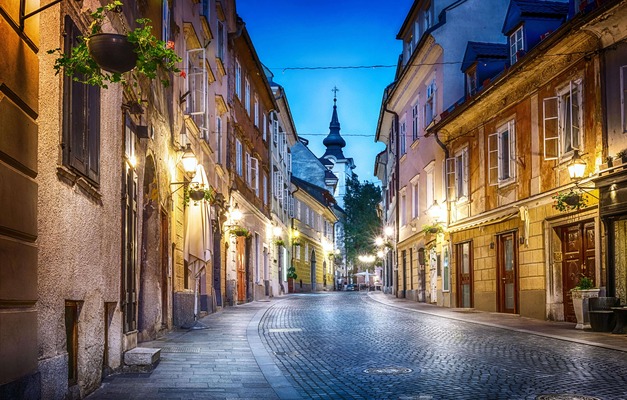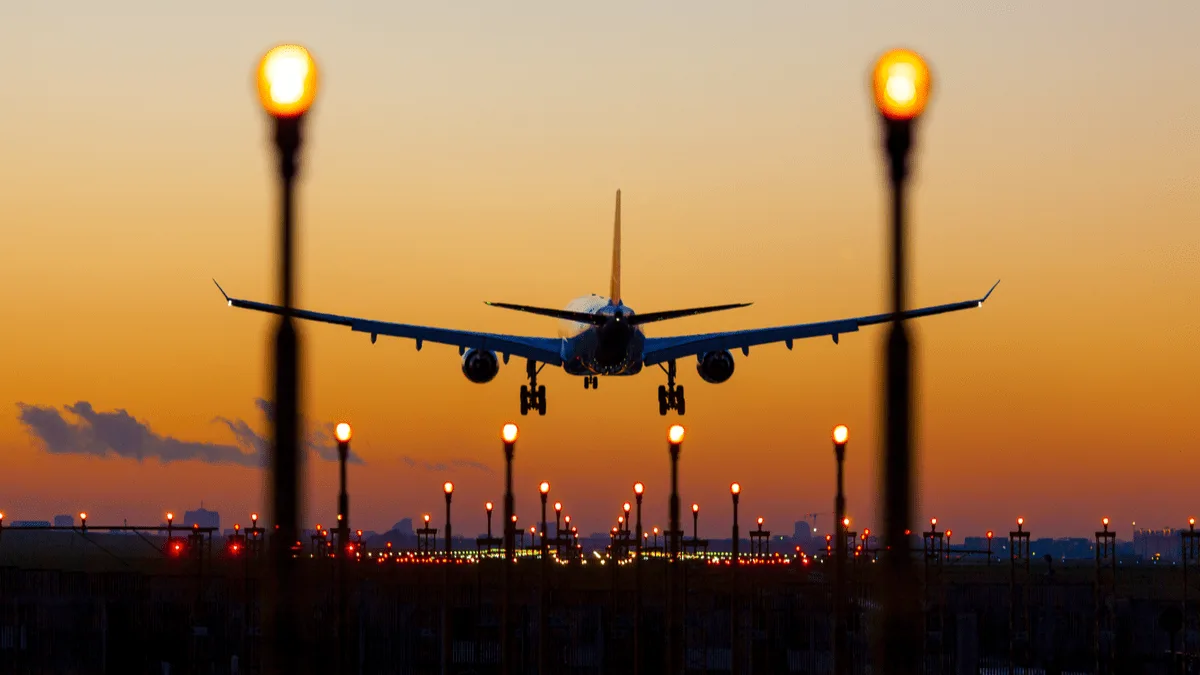
Eternal Italy: A Family Journey Through History in Rome, Florence & Venice
 10 Day Tour of Rome, Florence and Venice
10 Day Tour of Rome, Florence and Venice
Overview
Trip Map
Itinerary
Inclusions
Reviews







10 Days 9 Nights
Best Time: Jan-Dec
Families With Children
History Buffs
Experience a 10-day journey through northern Italy, where you'll encounter history, beauty, and culture as you visit Rome, Florence, and Venice with your family. Marvel at ancient Rome in the ruins of the Forum and Palatine Hill, and see the greatest artworks of the Renaissance in Florence. Explore Venice's enchanting canals, see Pisa’s iconic Leaning Tower, and enjoy some family fun in the gardens of Villa Borghese. You'll gain a local perspective of each city with private guided tours, and enjoy detailed travel guidance provided by our mobile app, meaning that you'll travel stress-free and can focus on creating lasting memories.
- Witness the grandeur of Rome's Colosseum and relive the tales of gladiators with a private guide.
- Gaze in awe at Florence's Duomo, and unravel mysteries of Renaissance art in the Uffizi Gallery.
- Enjoy a relaxing afternoon with your family in the enchanting beauty of Villa Borghese Gardens.
- Glide beneath Rialto Bridge on Venice's Grand Canal and see the colorful islands of Murano & Burano.
- Get pleasantly lost in Venice and tour St. Mark's Basilica—an architectural masterpiece.
Experience a 10-day journey through northern Italy, where you'll encounter history, beauty, and culture as you visit Rome, Florence, and Venice with your family. Marvel at ancient Rome in the ruins of the Forum and Palatine Hill, and see the greatest artworks of the Renaissance in Florence. Explore Venice's enchanting canals, see Pisa’s iconic Leaning Tower, and enjoy some family fun in the gardens of Villa Borghese. You'll gain a local perspective of each city with private guided tours, and enjoy detailed travel guidance provided by our mobile app, meaning that you'll travel stress-free and can focus on creating lasting memories.
- Witness the grandeur of Rome's Colosseum and relive the tales of gladiators with a private guide.
- Gaze in awe at Florence's Duomo, and unravel mysteries of Renaissance art in the Uffizi Gallery.
- Enjoy a relaxing afternoon with your family in the enchanting beauty of Villa Borghese Gardens.
- Glide beneath Rialto Bridge on Venice's Grand Canal and see the colorful islands of Murano & Burano.
- Get pleasantly lost in Venice and tour St. Mark's Basilica—an architectural masterpiece.

Colosseum
Historic Landmarks

Vatican City
Churches & Monasteries

Trevi Fountain
Historic Landmarks

Piazza del Duomo
Churches & Monasteries

Uffizi Gallery
Museums & Galleries

Galleria dell'Accademia
Museums & Galleries

Oltrarno & Piazzale Michelangelo
Cultural

Grand Canal
European History

Saint Mark's Basilica
Architecture
Must see sights

Colosseum
Historic Landmarks

Vatican City
Churches & Monasteries

Trevi Fountain
Historic Landmarks

Piazza del Duomo
Churches & Monasteries

Uffizi Gallery
Museums & Galleries

Galleria dell'Accademia
Museums & Galleries

Oltrarno & Piazzale Michelangelo
Cultural

Grand Canal
European History

Saint Mark's Basilica
Architecture
Starting from
$2600
per person
 Not included
Not included Secure Your Customizable Trip
Enter your details to embark on a journey that can be tailored just for you.
Start
Travelers
Add Room
Remove Room
Preferred Hotel Stars
Craft Your Own Itinerary
Select your interests and destinations for a trip plan inspired by you.
Trip Map & Itinerary
Enable/Disable Map Scrolling
Click To Make Map Interactive

Trip Timeline
 Edit Details
Edit DetailsArrival
3 nights
Rome
Italy
Train: 2h
3 nights
Florence
Italy
Train: 2.5h
3 nights
Venice
Italy
Departure
Day-By-Day Itinerary
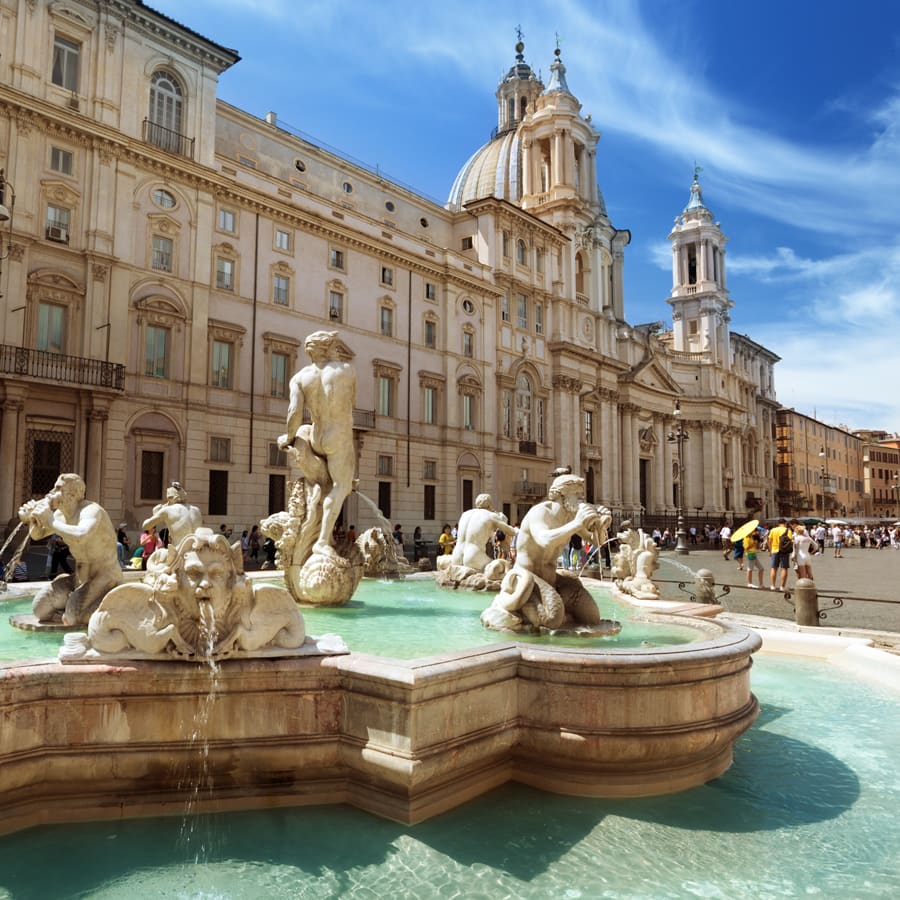
Day 1
Arrive Rome
View More
Day 1
Arrive Rome



11:30 AM
Private Transfer from Rome Fiumicino to Hotel
For your arrival in Rome, we will provide information on the customs and passport procedures. We will schedule a pick up for your flight's arrival time. You will be met at arrivals inside the terminal by a driver holding a sign with your name on it. The transfer is for your party only - you will not be sharing a vehicle. The cost of the ride will be included in your itinerary package and you will be taken directly to your hotel. IMPORTANT NOTE: Please be aware the car service can fit up to 1 checked item of luggage and 1 personal item per person, such as a purse or small backpack. If you think you will have more baggage, please inform your travel consultant as this may result in an additional fee.

Day 1
Arrive Rome
View More


Day 1
Arrive Rome




11:30 AM:
Private Transfer to your Hotel
Mid-Day/Afternoon:
Rome's Historic Center
Late Afternoon/Early Evening:
Spanish Steps


Day 2
Rome
View More
Day 2
Rome



9:00 AM - 12:00 PM
Heart of the Empire - Private Tour of Ancient Rome & the Colosseum
On this 3-hour private guided tour, you will explore the imposing remains of ancient Rome. Your guide will explain the extraordinary history of the birth of Rome, life in the city and everything about the fall of the Empire. Visit the Colosseum, the monumental ruins of the Roman Forum, and end the tour on the Capitoline Hill, the smallest and most important of the seven hills of Ancient Rome.

Colosseum
Ancient Roman Ampitheater
Show More

Colosseum
Ancient Roman Ampitheater
Show More

Colosseum
Ancient Roman Ampitheater
Show More

Colosseum
Ancient Roman Ampitheater
Show More

Colosseum
Ancient Roman Ampitheater
Show More
prev
next

Day 2
Rome
View More

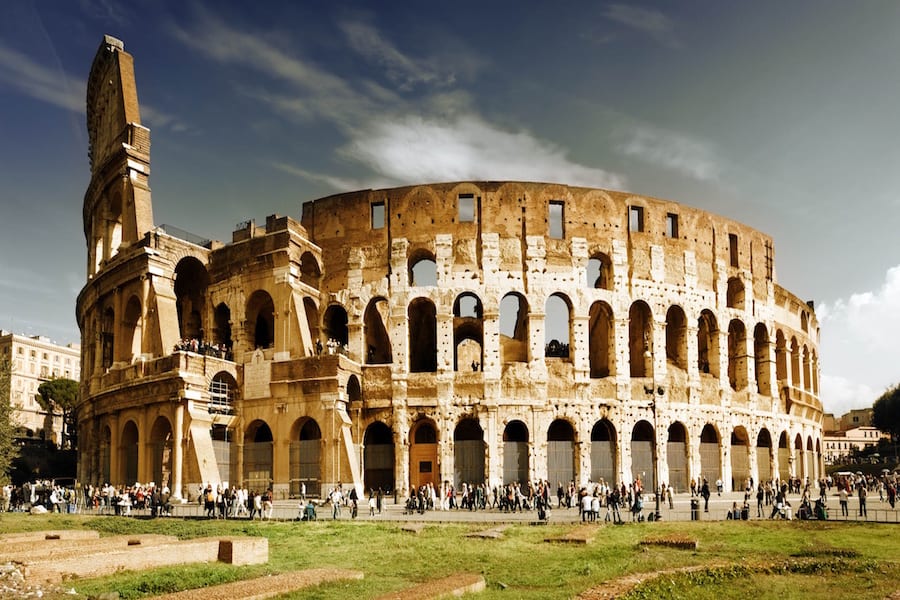
Colosseum
 Highlight of Ancient Rome Guided Walk
Highlight of Ancient Rome Guided WalkAncient Roman Ampitheater
Monumental Roman amphitheater once used for gladiatorial games

Colosseum
 Highlight of Ancient Rome Guided Walk
Highlight of Ancient Rome Guided WalkAncient Roman Ampitheater
Monumental Roman amphitheater once used for gladiatorial games

Colosseum
 Highlight of Ancient Rome Guided Walk
Highlight of Ancient Rome Guided WalkAncient Roman Ampitheater
Monumental Roman amphitheater once used for gladiatorial games

Colosseum
 Highlight of Ancient Rome Guided Walk
Highlight of Ancient Rome Guided WalkAncient Roman Ampitheater
Monumental Roman amphitheater once used for gladiatorial games

Colosseum
 Highlight of Ancient Rome Guided Walk
Highlight of Ancient Rome Guided WalkAncient Roman Ampitheater
Monumental Roman amphitheater once used for gladiatorial games
prev
next

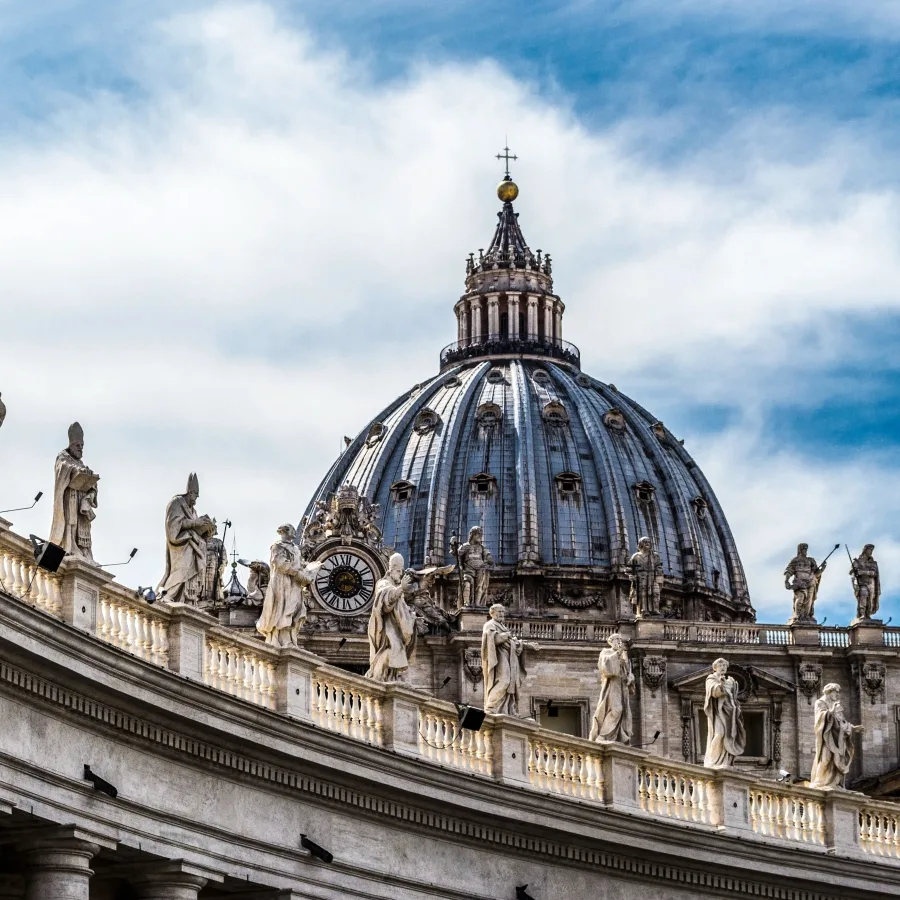
Day 3
Rome
View More
Day 3
Rome


Early Morning to Late Afternoon
Explore the Vatican City's Many Wonders
Rome is unique in the world in that it contains an independent country within its city limits - the Vatican City, from where the Pope administers the Catholic Church. The symbolic center of Catholicism is St Peter's Basilica, the second-largest Catholic church in the world and among the most beautiful. The Vatican Museum contains one of the greatest collections of art in existence, including Michelangelo's jaw-dropping Sistine Chapel. The popes had a bigger influence on Rome than just the collection of art. The Pope's title is actually Bishop of Rome, and popes administed the city for centuries, shaping its architecture & public spaces. Rome was re-built to be an example of urban beauty, and the Vatican was meant to be the showcase within the showcase. Their success is evident from the throngs of visitors who flock here even today.

Vatican Museums
Book early if you want to see the Vatican Museum's monumental works of art from the greatest Italian artists of the Renaissance.
Show More

St Peter’s Basilica
Explore the gigantic and incredibly beautiful church known as "the greatest of all churches of Christendom".
Show More

Vatican Gardens
Escape the crowds in this oasis of green hidden behind the walls of the Vatican.
Show More

St Peter's Square
Stand in the middle of this famous square in which the faithful gather to hear the Pope give audiences and celebrate mass.
Show More

Sistine Chapel
Gaze up at the world's most famous ceiling, the masterpiece of Michelangelo.
Show More

Vatican Museums
Book early if you want to see the Vatican Museum's monumental works of art from the greatest Italian artists of the Renaissance.
Show More

St Peter’s Basilica
Explore the gigantic and incredibly beautiful church known as "the greatest of all churches of Christendom".
Show More

Vatican Gardens
Escape the crowds in this oasis of green hidden behind the walls of the Vatican.
Show More

St Peter's Square
Stand in the middle of this famous square in which the faithful gather to hear the Pope give audiences and celebrate mass.
Show More

Sistine Chapel
Gaze up at the world's most famous ceiling, the masterpiece of Michelangelo.
Show More

Vatican Museums
Book early if you want to see the Vatican Museum's monumental works of art from the greatest Italian artists of the Renaissance.
Show More
prev
next

Day 3
Rome
View More

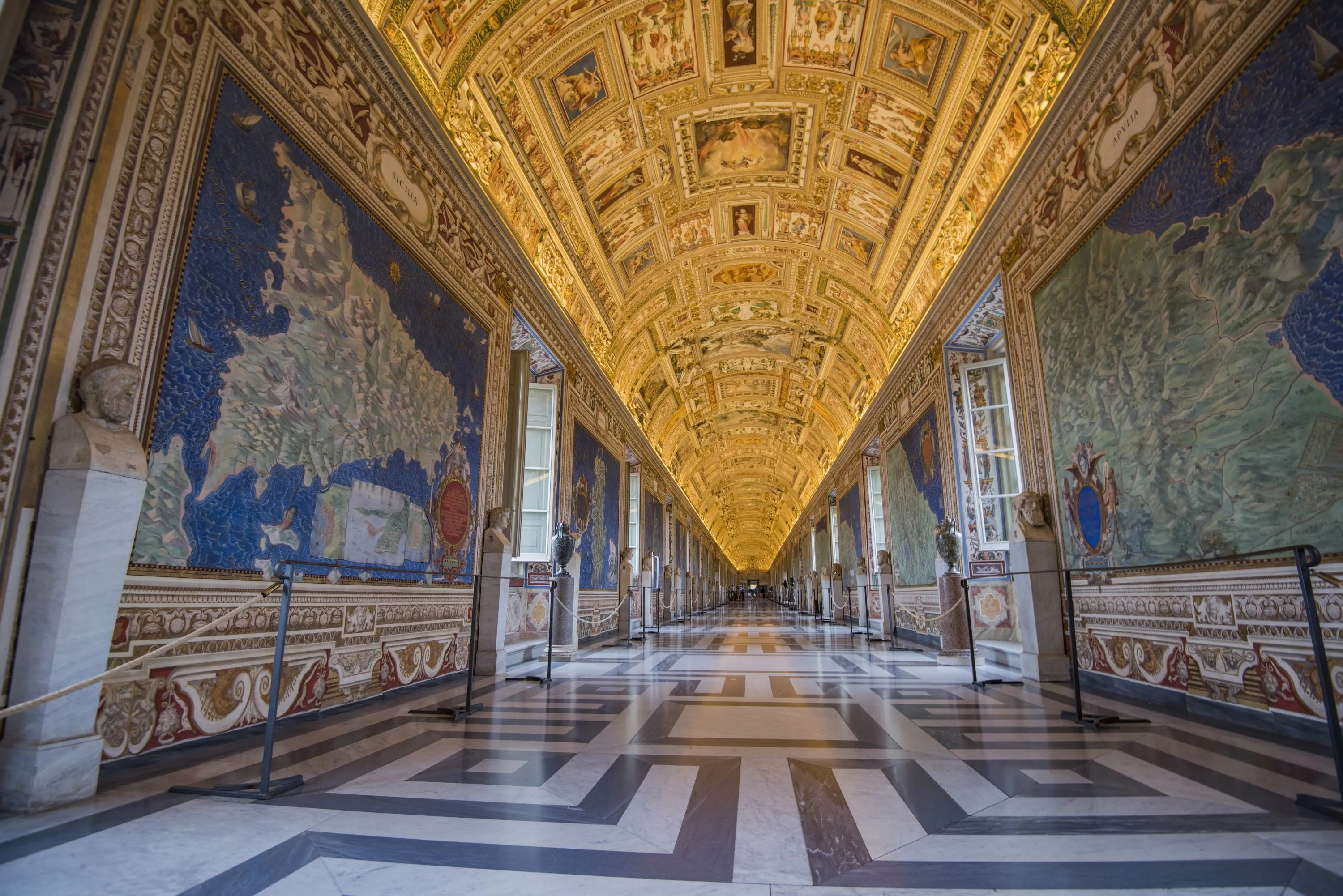
Vatican Museums
 Highlight of Vatican City
Highlight of Vatican CityBook early if you want to see the Vatican Museum's monumental works of art from the greatest Italian artists of the Renaissance.
The Vatican Museum is actually 26 different museums, which include not only exhibitions but chapels, apartments, and other rooms of the Vatican palace, covering a huge range of fine and applied arts patronized by the popes. There's also an outstanding collection of ancient antiquities (including even the Emperor Nero's red stone bathtub), a gallery of hand-painted maps, and whole rooms turned into works of art. In addition to ancient and medieval works of art, you'll see masterpieces by the "who's who" of the Italian Renaissance, including Raphael, Leonardo da Vinci, Titian, and Caravaggio. Other highlights include panels by the brilliant monk-artist Fra Angelico, works from the Venetian school, including Vavarini, and much, much more. Booking in advance is highly recommended as otherwise you can wait for hours or not even be able to get in at all.
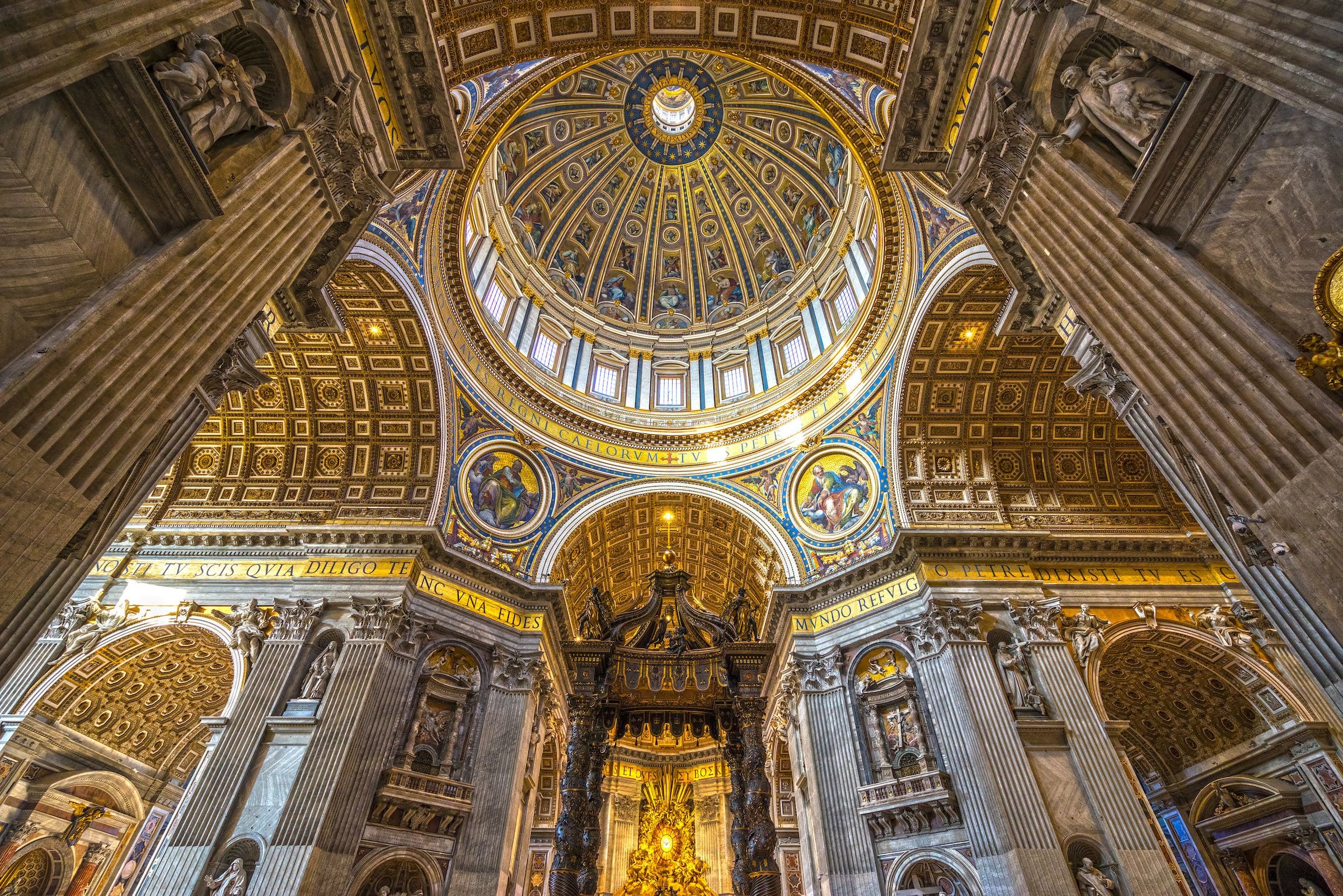
St Peter’s Basilica
 Highlight of Vatican City
Highlight of Vatican CityExplore the gigantic and incredibly beautiful church known as "the greatest of all churches of Christendom".
The basilica is one of the chief pilgrimage sites in the Christian world, and one of the most popular tourist destinations in Rome. The basilica is the symbolic center of the church not only because the Pope frequently celebrates Mass there, but because it is believed that the apostle St. Peter is buried beneath it. Catholics consider Peter as the first Bishop of Rome and "the rock" upon which the Catholic Church was built, in accordance with Christ's instructions. Inside you can admire sculptures by Bernini as well as Michelangelo's famous sculpture of the Virgin Mary holding the crucified Jesus, known as The Pietà. The church's elaborate and impressive golden interior is a sight to behold. Other sights include St Peter's tomb, the Papal crypts in the necropolis under the basilica, as well as the dome, which rewards visitors with views over Rome. Entry is free, but queues to visit the Basilica can be lengthy, so it is highly advised to either get there early or to purchase a skip the line entrance. The dome is also paid entry.
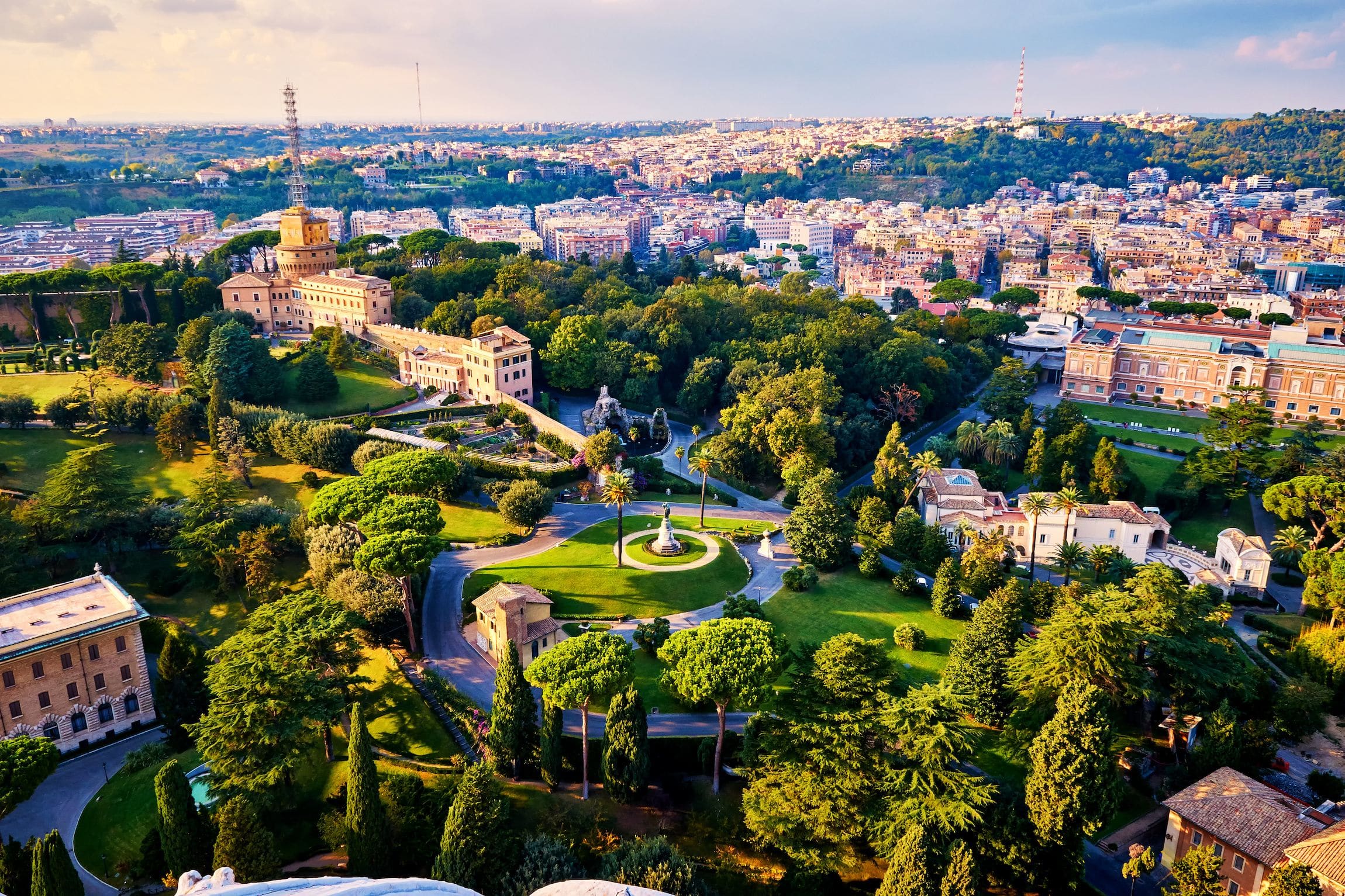
Vatican Gardens
 Highlight of Vatican City
Highlight of Vatican CityEscape the crowds in this oasis of green hidden behind the walls of the Vatican.
Accessible only via a guided tour, the gardens are definitely worth a visit. Just as the Popes have for hundreds of years, you can stroll the gardens and relax amidst the greenery, while taking in the perfect view of St. Peter's.
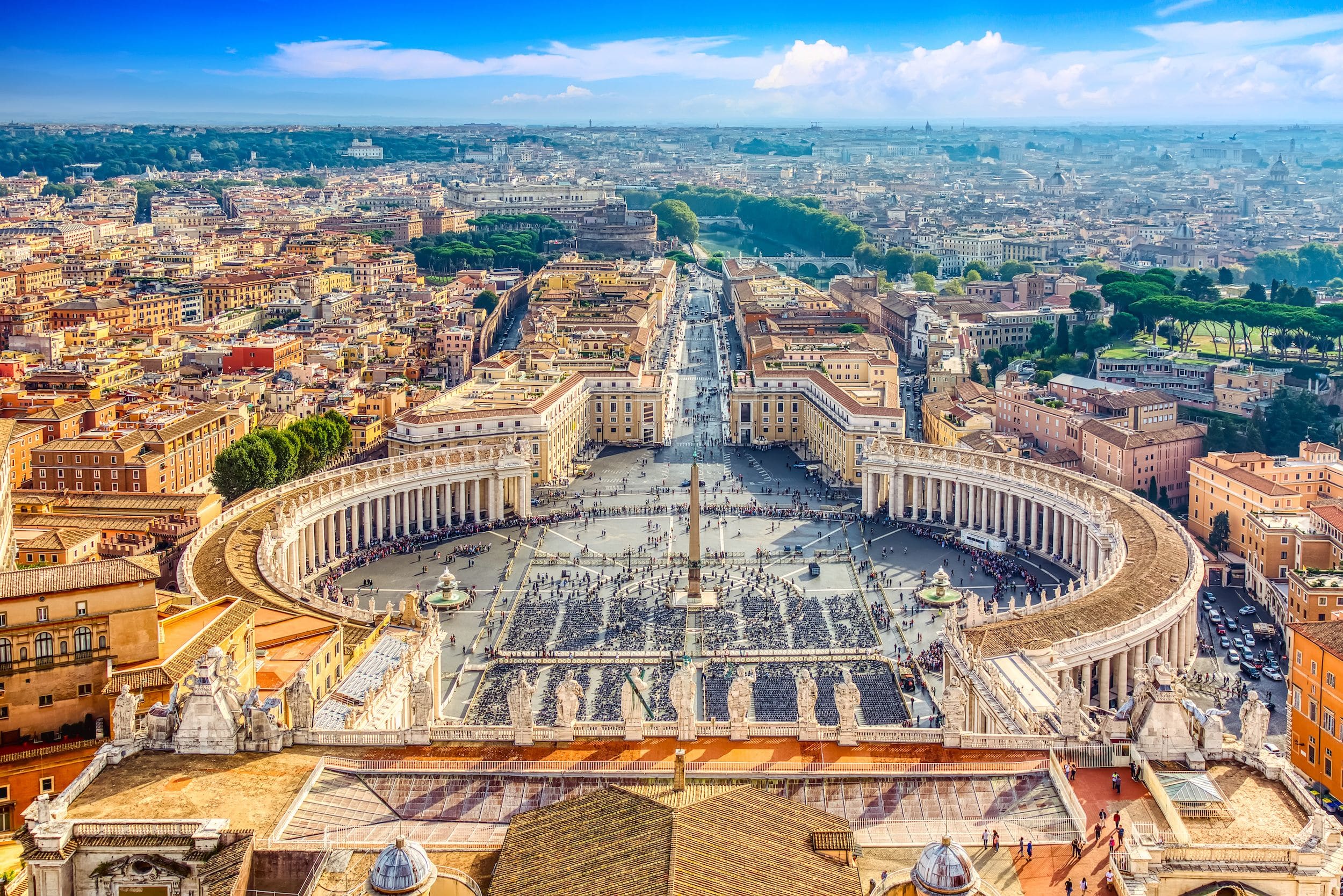
St Peter's Square
 Highlight of Vatican City
Highlight of Vatican CityStand in the middle of this famous square in which the faithful gather to hear the Pope give audiences and celebrate mass.
As one of the most superb conceptions of its kind in civic architecture, St Peter’s Square is the masterpiece of Gian Lorenzo Bernini and makes a wonderful approach to one of the world’s most magnificent churches, St Peter's Basilica. An oval rather than an actual square, the piazza, laid out in 1656-67, is partially enclosed by two semi-circular colonnades on which stand 96 statues of saints and martyrs. At the center of the oval stands an 84-foot (26m) tall Egyptian obelisk of red granite.
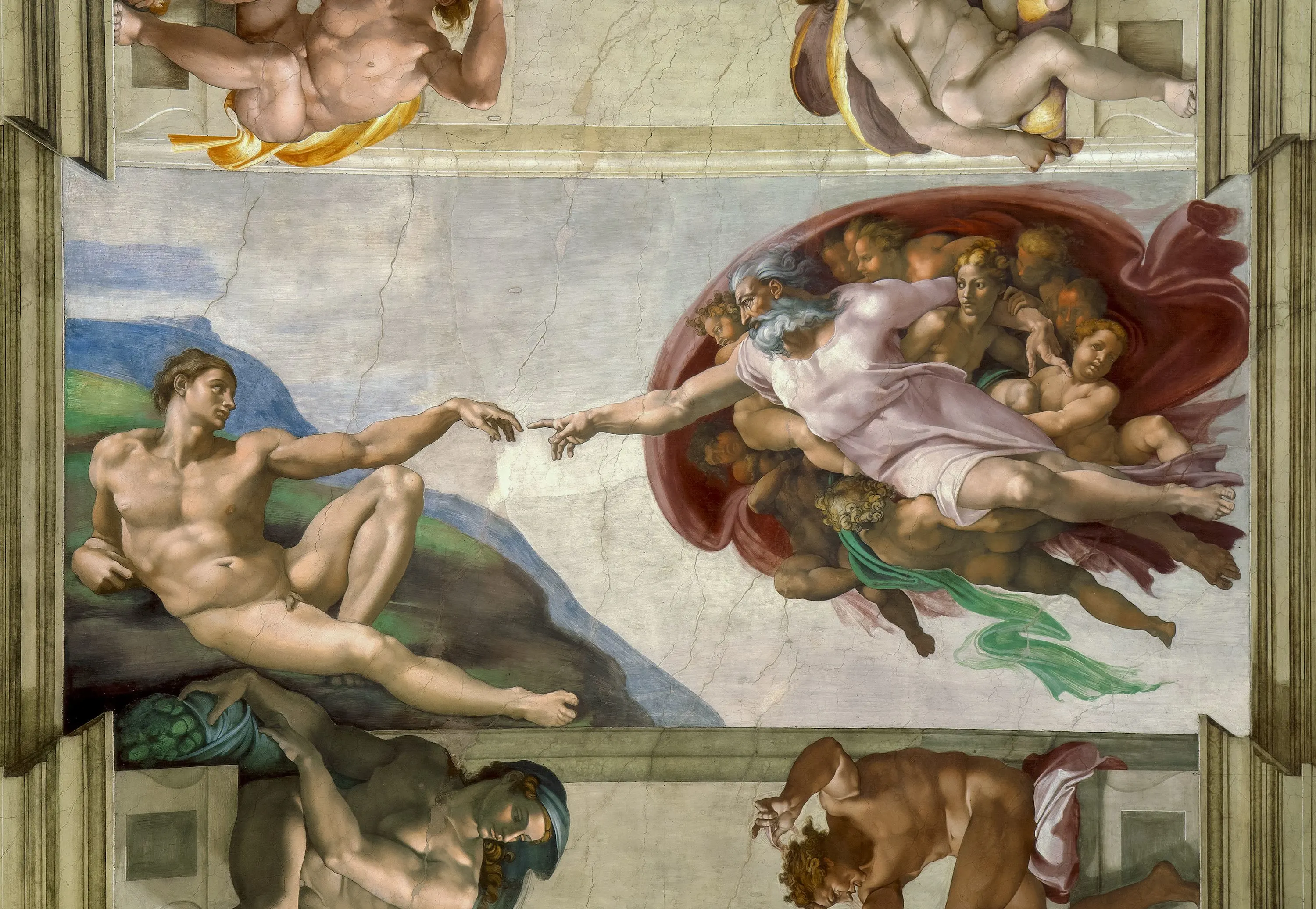
Sistine Chapel
 Highlight of Vatican City
Highlight of Vatican CityGaze up at the world's most famous ceiling, the masterpiece of Michelangelo.
This famous chapel inside the Vatican Museums is best known for Michelangelo's 16th-century painted ceiling of "The Creation of Adam" and "The Last Judgement" fresco that covers the whole altar wall of the chapel. The jaw-dropping sight is not to be missed, considered one of the top highlights of visiting the Vatican Museums and one of the top artistic wonders of the world.

Vatican Museums
 Highlight of Vatican City
Highlight of Vatican CityBook early if you want to see the Vatican Museum's monumental works of art from the greatest Italian artists of the Renaissance.
The Vatican Museum is actually 26 different museums, which include not only exhibitions but chapels, apartments, and other rooms of the Vatican palace, covering a huge range of fine and applied arts patronized by the popes. There's also an outstanding collection of ancient antiquities (including even the Emperor Nero's red stone bathtub), a gallery of hand-painted maps, and whole rooms turned into works of art. In addition to ancient and medieval works of art, you'll see masterpieces by the "who's who" of the Italian Renaissance, including Raphael, Leonardo da Vinci, Titian, and Caravaggio. Other highlights include panels by the brilliant monk-artist Fra Angelico, works from the Venetian school, including Vavarini, and much, much more. Booking in advance is highly recommended as otherwise you can wait for hours or not even be able to get in at all.

St Peter’s Basilica
 Highlight of Vatican City
Highlight of Vatican CityExplore the gigantic and incredibly beautiful church known as "the greatest of all churches of Christendom".
The basilica is one of the chief pilgrimage sites in the Christian world, and one of the most popular tourist destinations in Rome. The basilica is the symbolic center of the church not only because the Pope frequently celebrates Mass there, but because it is believed that the apostle St. Peter is buried beneath it. Catholics consider Peter as the first Bishop of Rome and "the rock" upon which the Catholic Church was built, in accordance with Christ's instructions. Inside you can admire sculptures by Bernini as well as Michelangelo's famous sculpture of the Virgin Mary holding the crucified Jesus, known as The Pietà. The church's elaborate and impressive golden interior is a sight to behold. Other sights include St Peter's tomb, the Papal crypts in the necropolis under the basilica, as well as the dome, which rewards visitors with views over Rome. Entry is free, but queues to visit the Basilica can be lengthy, so it is highly advised to either get there early or to purchase a skip the line entrance. The dome is also paid entry.

Vatican Gardens
 Highlight of Vatican City
Highlight of Vatican CityEscape the crowds in this oasis of green hidden behind the walls of the Vatican.
Accessible only via a guided tour, the gardens are definitely worth a visit. Just as the Popes have for hundreds of years, you can stroll the gardens and relax amidst the greenery, while taking in the perfect view of St. Peter's.

St Peter's Square
 Highlight of Vatican City
Highlight of Vatican CityStand in the middle of this famous square in which the faithful gather to hear the Pope give audiences and celebrate mass.
As one of the most superb conceptions of its kind in civic architecture, St Peter’s Square is the masterpiece of Gian Lorenzo Bernini and makes a wonderful approach to one of the world’s most magnificent churches, St Peter's Basilica. An oval rather than an actual square, the piazza, laid out in 1656-67, is partially enclosed by two semi-circular colonnades on which stand 96 statues of saints and martyrs. At the center of the oval stands an 84-foot (26m) tall Egyptian obelisk of red granite.

Sistine Chapel
 Highlight of Vatican City
Highlight of Vatican CityGaze up at the world's most famous ceiling, the masterpiece of Michelangelo.
This famous chapel inside the Vatican Museums is best known for Michelangelo's 16th-century painted ceiling of "The Creation of Adam" and "The Last Judgement" fresco that covers the whole altar wall of the chapel. The jaw-dropping sight is not to be missed, considered one of the top highlights of visiting the Vatican Museums and one of the top artistic wonders of the world.

Vatican Museums
 Highlight of Vatican City
Highlight of Vatican CityBook early if you want to see the Vatican Museum's monumental works of art from the greatest Italian artists of the Renaissance.
The Vatican Museum is actually 26 different museums, which include not only exhibitions but chapels, apartments, and other rooms of the Vatican palace, covering a huge range of fine and applied arts patronized by the popes. There's also an outstanding collection of ancient antiquities (including even the Emperor Nero's red stone bathtub), a gallery of hand-painted maps, and whole rooms turned into works of art. In addition to ancient and medieval works of art, you'll see masterpieces by the "who's who" of the Italian Renaissance, including Raphael, Leonardo da Vinci, Titian, and Caravaggio. Other highlights include panels by the brilliant monk-artist Fra Angelico, works from the Venetian school, including Vavarini, and much, much more. Booking in advance is highly recommended as otherwise you can wait for hours or not even be able to get in at all.
prev
next

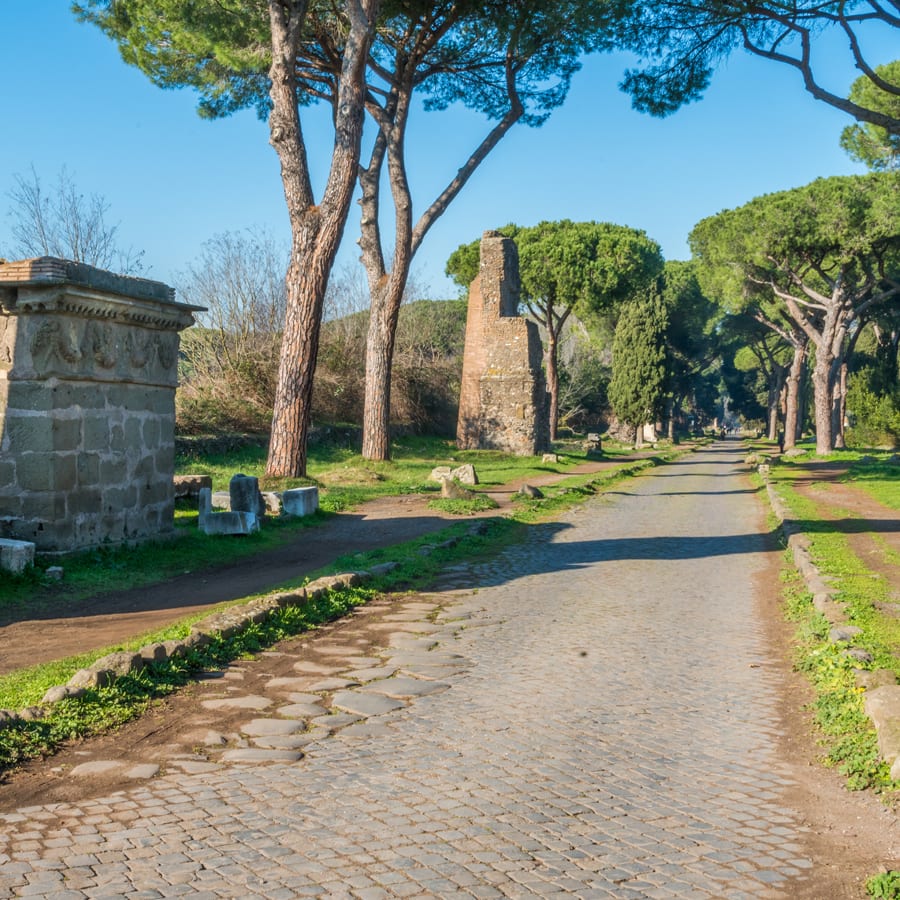
Day 4
Rome to Florence
View More
Day 4
Rome to Florence






Morning/Mid-Day
Traveling the Via Appia on Foot or Bicycle
One of the earliest and strategically most important Roman roads of the ancient republic, the Via Appia (or Appian Way) once spanned 350 miles (563km), all the way from the Roman Forum in Rome to modern-day Brindisi. On the south side of Rome lies one of the best preserved stretches of the road, the Via Apia Antica. Take an afternoon to explore the ruins, catacombs, and sights along this infamously cobbled way. Exploring on foot is a relaxed and easy way to do it, made easier by the fact that bus stops along the way mean you don't have to backtrack. Bike rentals are also available and are a good way to cover as much ground as possible. But as an ancient cobbled road, sections of this walk are very bumpy, and depending on which route you take, you may encounter traffic. So you may want to consider if biking with a guided tour makes more sense.

Catacombs of San Callisto (i.e. St. Callixtus)
Discover the crypt and catacombs of an ancient Christian burial site estimated to hold half a million bodies.
Show More

Catacombs of San Callisto (i.e. St. Callixtus)
Discover the crypt and catacombs of an ancient Christian burial site estimated to hold half a million bodies.
Show More

Catacombs of San Callisto (i.e. St. Callixtus)
Discover the crypt and catacombs of an ancient Christian burial site estimated to hold half a million bodies.
Show More

Catacombs of San Callisto (i.e. St. Callixtus)
Discover the crypt and catacombs of an ancient Christian burial site estimated to hold half a million bodies.
Show More

Catacombs of San Callisto (i.e. St. Callixtus)
Discover the crypt and catacombs of an ancient Christian burial site estimated to hold half a million bodies.
Show More
prev
next

Day 4
Rome to Florence
View More

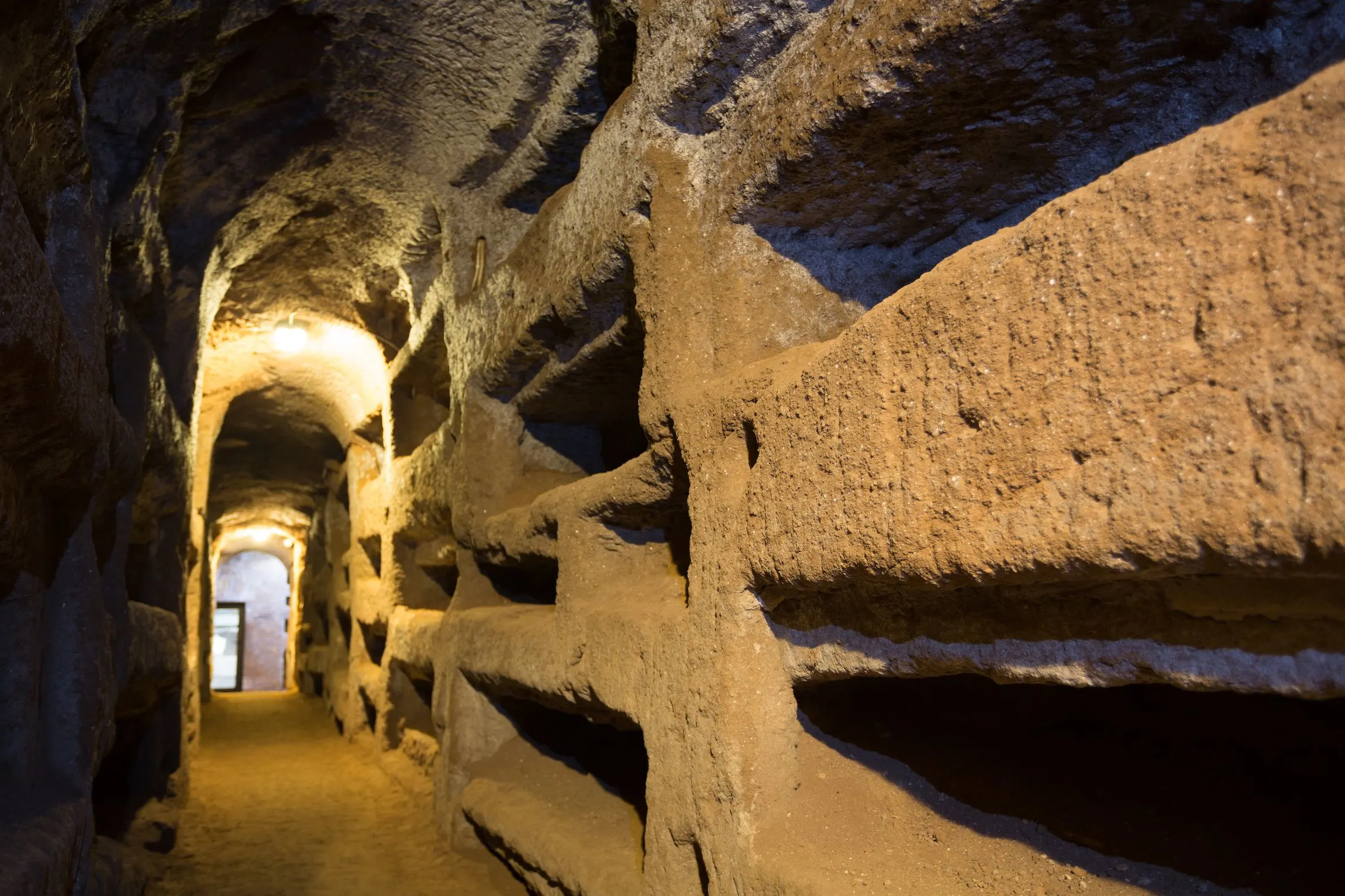
Catacombs of San Callisto (i.e. St. Callixtus)
 Highlight of Via Appia Antica
Highlight of Via Appia AnticaDiscover the crypt and catacombs of an ancient Christian burial site estimated to hold half a million bodies.
The catacombs are the most important landmark along the ancient Appian Way route because they include the Crypt of the Popes, which contained the remains of nine popes buried between the 2nd and 4th centuries. In times of persecution, the catacombs also provided a secret place of worship for early Christians. There are five levels and roughly 12 miles (20km) of passageways. Over time, the catacombs were mostly forgotten as the relics of the popes and saints they contained had been moved to different churces of Rome. It was not until the 19th century that Italian architects rediscovered it.

Catacombs of San Callisto (i.e. St. Callixtus)
 Highlight of Via Appia Antica
Highlight of Via Appia AnticaDiscover the crypt and catacombs of an ancient Christian burial site estimated to hold half a million bodies.
The catacombs are the most important landmark along the ancient Appian Way route because they include the Crypt of the Popes, which contained the remains of nine popes buried between the 2nd and 4th centuries. In times of persecution, the catacombs also provided a secret place of worship for early Christians. There are five levels and roughly 12 miles (20km) of passageways. Over time, the catacombs were mostly forgotten as the relics of the popes and saints they contained had been moved to different churces of Rome. It was not until the 19th century that Italian architects rediscovered it.

Catacombs of San Callisto (i.e. St. Callixtus)
 Highlight of Via Appia Antica
Highlight of Via Appia AnticaDiscover the crypt and catacombs of an ancient Christian burial site estimated to hold half a million bodies.
The catacombs are the most important landmark along the ancient Appian Way route because they include the Crypt of the Popes, which contained the remains of nine popes buried between the 2nd and 4th centuries. In times of persecution, the catacombs also provided a secret place of worship for early Christians. There are five levels and roughly 12 miles (20km) of passageways. Over time, the catacombs were mostly forgotten as the relics of the popes and saints they contained had been moved to different churces of Rome. It was not until the 19th century that Italian architects rediscovered it.

Catacombs of San Callisto (i.e. St. Callixtus)
 Highlight of Via Appia Antica
Highlight of Via Appia AnticaDiscover the crypt and catacombs of an ancient Christian burial site estimated to hold half a million bodies.
The catacombs are the most important landmark along the ancient Appian Way route because they include the Crypt of the Popes, which contained the remains of nine popes buried between the 2nd and 4th centuries. In times of persecution, the catacombs also provided a secret place of worship for early Christians. There are five levels and roughly 12 miles (20km) of passageways. Over time, the catacombs were mostly forgotten as the relics of the popes and saints they contained had been moved to different churces of Rome. It was not until the 19th century that Italian architects rediscovered it.

Catacombs of San Callisto (i.e. St. Callixtus)
 Highlight of Via Appia Antica
Highlight of Via Appia AnticaDiscover the crypt and catacombs of an ancient Christian burial site estimated to hold half a million bodies.
The catacombs are the most important landmark along the ancient Appian Way route because they include the Crypt of the Popes, which contained the remains of nine popes buried between the 2nd and 4th centuries. In times of persecution, the catacombs also provided a secret place of worship for early Christians. There are five levels and roughly 12 miles (20km) of passageways. Over time, the catacombs were mostly forgotten as the relics of the popes and saints they contained had been moved to different churces of Rome. It was not until the 19th century that Italian architects rediscovered it.
prev
next

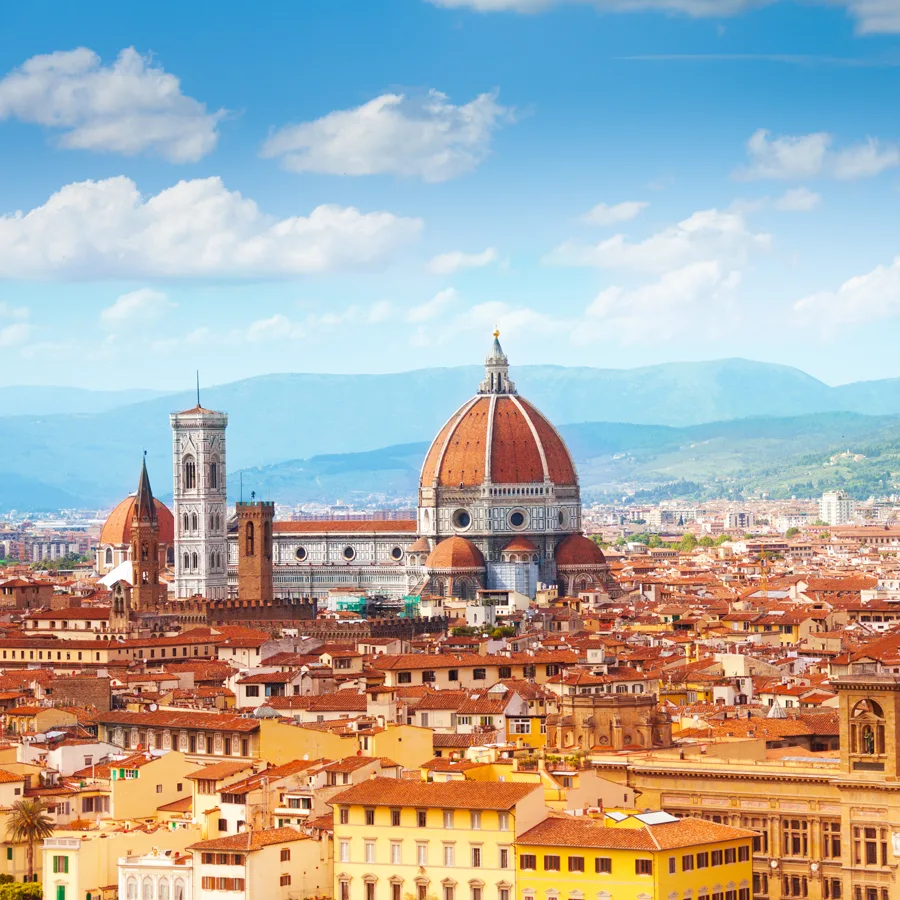
Day 5
Florence
View More
Day 5
Florence



9:00 AM - 12:00 PM
Best of Florence: Half-Day Walking Tour
Enjoy a 3-hour private walking tour of Florence, the perfect introduction to the masterpieces of this city. Stroll around the historic center and take in sights such as the Palazzo Vecchio, Ponte Vecchio, Piazza Della Signora and end your tour at the famous Galleria dell'Accademia where you can enter to see Michelangelo's marble masterpiece, the statue of David.

Galleria dell'Accademia
Art museum and home to Michelangelo's famous David
Show More

Galleria dell'Accademia
Art museum and home to Michelangelo's famous David
Show More

Galleria dell'Accademia
Art museum and home to Michelangelo's famous David
Show More

Galleria dell'Accademia
Art museum and home to Michelangelo's famous David
Show More

Galleria dell'Accademia
Art museum and home to Michelangelo's famous David
Show More
prev
next

Day 5
Florence
View More

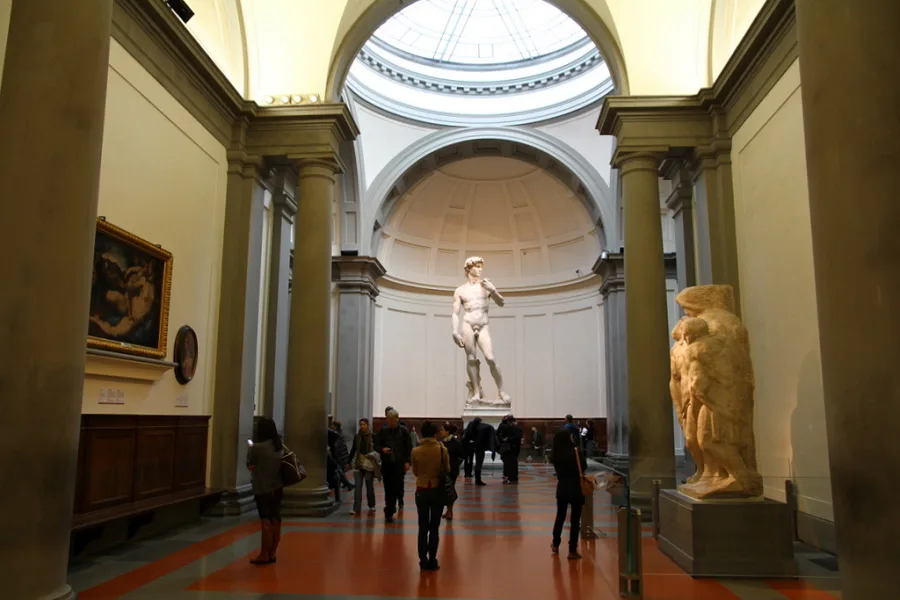
Galleria dell'Accademia
 Highlight of Private Guided Walk in Florence
Highlight of Private Guided Walk in FlorenceArt museum and home to Michelangelo's famous David
The Gallery's prized exhibits are naturally its works by Michelangelo, including in addition to David his unfinished Slaves (or Prisoners).

Galleria dell'Accademia
 Highlight of Private Guided Walk in Florence
Highlight of Private Guided Walk in FlorenceArt museum and home to Michelangelo's famous David
The Gallery's prized exhibits are naturally its works by Michelangelo, including in addition to David his unfinished Slaves (or Prisoners).

Galleria dell'Accademia
 Highlight of Private Guided Walk in Florence
Highlight of Private Guided Walk in FlorenceArt museum and home to Michelangelo's famous David
The Gallery's prized exhibits are naturally its works by Michelangelo, including in addition to David his unfinished Slaves (or Prisoners).

Galleria dell'Accademia
 Highlight of Private Guided Walk in Florence
Highlight of Private Guided Walk in FlorenceArt museum and home to Michelangelo's famous David
The Gallery's prized exhibits are naturally its works by Michelangelo, including in addition to David his unfinished Slaves (or Prisoners).

Galleria dell'Accademia
 Highlight of Private Guided Walk in Florence
Highlight of Private Guided Walk in FlorenceArt museum and home to Michelangelo's famous David
The Gallery's prized exhibits are naturally its works by Michelangelo, including in addition to David his unfinished Slaves (or Prisoners).
prev
next

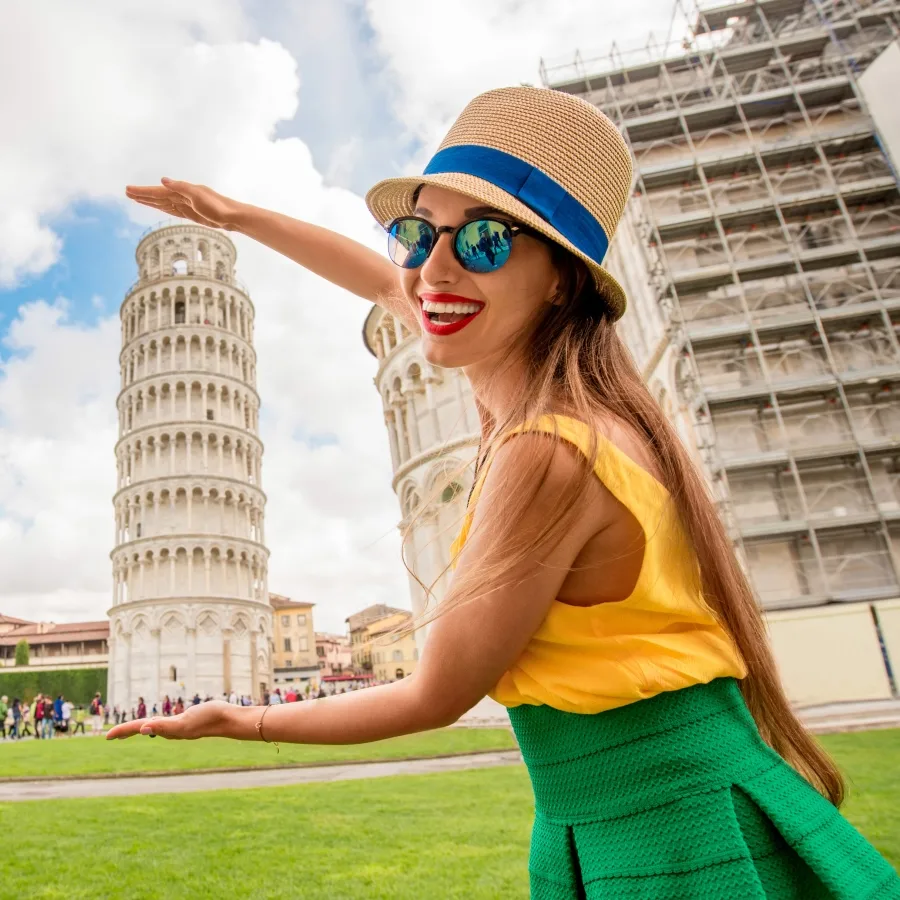
Day 6
Florence
View More
Day 6
Florence



Early Morning to Mid-Day
Excursion to Pisa & the Famous Leaning Tower
Located only an hour from Florence by train, Pisa is more than just a bucket list destination. Yes, the Leaning Tower of Pisa is among Italy's most iconic sights, but the aptly named Square of Miracles on which it's located contains other stunning buildings set out on a perfectly manicured emerald green English lawn. Other parts of the town of Pisa are also well worth visiting. During the middle ages it was one of Italy's strongest city states and a great naval power, and the city fathers used its wealth to endow it with monuments and grand residences. In the later middle ages its military and economic strength waned, and it became a quiet refuge of scholars and artists working out of its renowned university.

Camposanto
Visit a sublimely elegant cemetery built upon soil brought back from the Holy Land by crusaders.
Show More

Baptistery of San Giovanni
Listen to your steps echo in the largest baptistry in Italy.
Show More

Leaning Tower
Take a disorientating climb to the top of this iconic tower.
Show More

Duomo di Pisa
See what is perhaps the most famous and beautiful Romanesque cathedral in Europe, whose construction began almost a thousand years ago.
Show More

Camposanto
Visit a sublimely elegant cemetery built upon soil brought back from the Holy Land by crusaders.
Show More

Baptistery of San Giovanni
Listen to your steps echo in the largest baptistry in Italy.
Show More

Leaning Tower
Take a disorientating climb to the top of this iconic tower.
Show More

Duomo di Pisa
See what is perhaps the most famous and beautiful Romanesque cathedral in Europe, whose construction began almost a thousand years ago.
Show More
prev
next

Day 6
Florence
View More


Camposanto
 Highlight of Pisa Excursion
Highlight of Pisa ExcursionVisit a sublimely elegant cemetery built upon soil brought back from the Holy Land by crusaders.
The Camposanto has been called the most beautiful cemetery in the world. The interior of the Composanto is in the form of an oblong cloister, lit by lovely traceried windows which were never filled by glass. These frame a lawn on the site of an earlier burial ground, which according to legend, the Archbishop Ubaldo Lanfranchi created by having Pisan knights on the Fourth Crusade of 1203 bring a cargo of soil back to Pisa from the hill of Golgotha, in order that eminent Pisans might be bureid in holy earth. From the 14th century onwards Roman sculptures, including a huge collection of sarcophagi, were brought here to decorate the four walks, and despite theft, removal and damage in the Second World War, many have survived to this day.
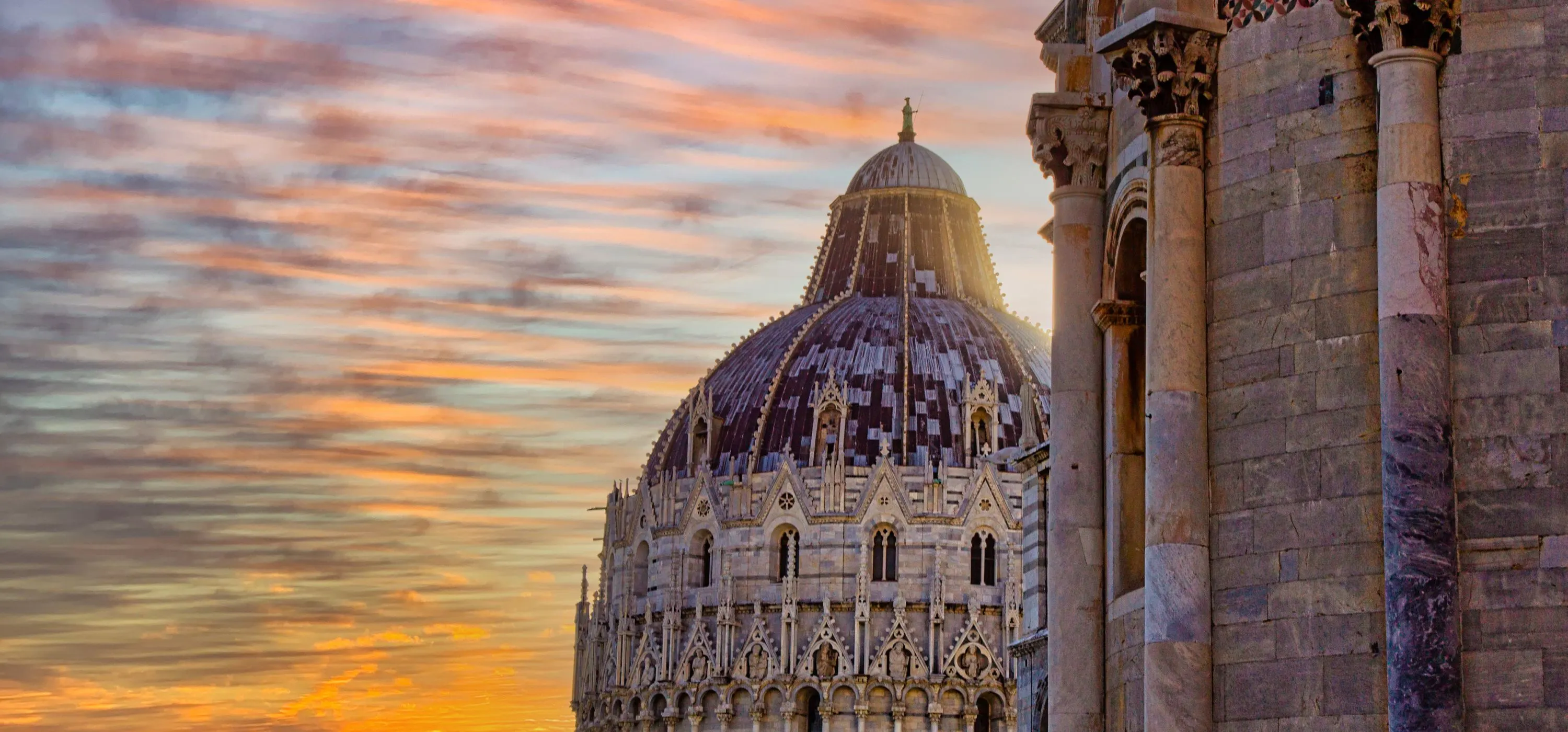
Baptistery of San Giovanni
 Highlight of Pisa Excursion
Highlight of Pisa ExcursionListen to your steps echo in the largest baptistry in Italy.
Another great monument on the Square of Miracles is the Baptistry of San Giovanni (St. John). The echoing interior has a two-storeyed ambulatory, and is decorated with bands of black and white marble. While its interior is a bit underwhelming, it is famous for its acoustics (ask the guard to demonstrate). Also take a moment to admire the beautiful pulpit, created by the father of the sculptor responsible for the pulpit in the cathedral (Duomo), though the workmanship here is possibly even more delicate.

Leaning Tower
 Highlight of Pisa Excursion
Highlight of Pisa ExcursionTake a disorientating climb to the top of this iconic tower.
World-famous because of its pronounced tilt, the tower is over 4m (13ft) out of the perpendicular, and travelers for centuries have admired its capacity not to topple over. The foundation stone of this magnificent Romanesque building was laid in 1173, although we don't know who its architect was. Over 54m/177ft high, it has seven storeys, six of them encircled with loggias with 180 little columns. The beautiful bell chamber on the top was only added after 1350. The building survives as one of the most original monuments of medieval Europe. You may already know the apocryphal story of Galileo, who was born in Pisa in 1564, carrying out experiments from the tower to demonstrate to members of the Pisa university that all falling bodies, regardless of their size, descend with equal velocity (though a cage on top of the tower will prevent you from carrying out the same experiment these days).
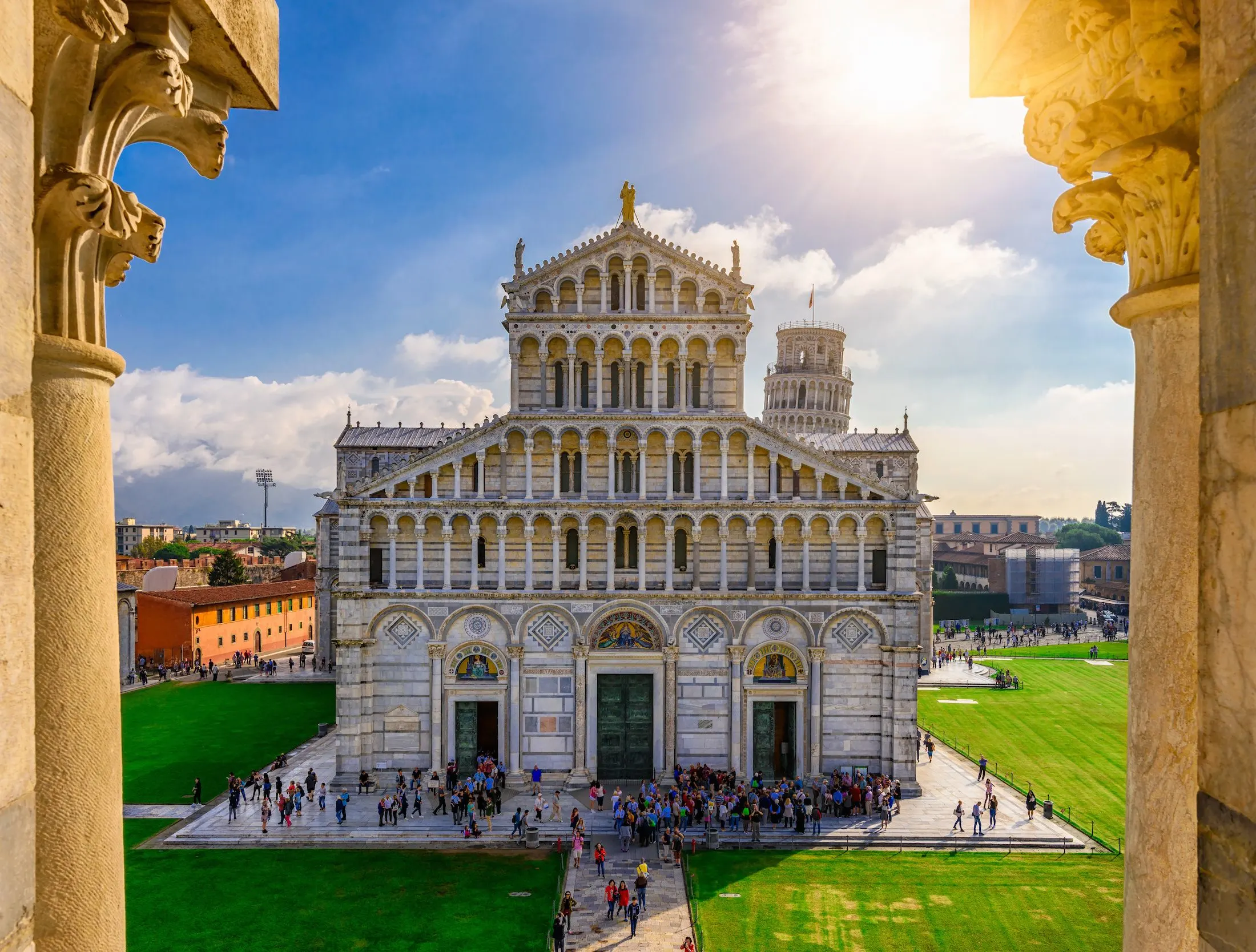
Duomo di Pisa
 Highlight of Pisa Excursion
Highlight of Pisa ExcursionSee what is perhaps the most famous and beautiful Romanesque cathedral in Europe, whose construction began almost a thousand years ago.
The breathtaking duomo is one of the most celebrated Romanesque buildings in Italy and the prototype of the Pisan style of architecture copied throughout Tuscany but never quite surpassed. Begun in 1063 and completed about a century later, the building's effect is heightened by the broad white marble pavement on which it stands. It is covered inside and out with an interplay of black and white marble, subtly toned on the exterior to a delicate grey and russet. There are four tiers of variegated colonnades with open galleries, above a row of seven tall blind arches.

Camposanto
 Highlight of Pisa Excursion
Highlight of Pisa ExcursionVisit a sublimely elegant cemetery built upon soil brought back from the Holy Land by crusaders.
The Camposanto has been called the most beautiful cemetery in the world. The interior of the Composanto is in the form of an oblong cloister, lit by lovely traceried windows which were never filled by glass. These frame a lawn on the site of an earlier burial ground, which according to legend, the Archbishop Ubaldo Lanfranchi created by having Pisan knights on the Fourth Crusade of 1203 bring a cargo of soil back to Pisa from the hill of Golgotha, in order that eminent Pisans might be bureid in holy earth. From the 14th century onwards Roman sculptures, including a huge collection of sarcophagi, were brought here to decorate the four walks, and despite theft, removal and damage in the Second World War, many have survived to this day.

Baptistery of San Giovanni
 Highlight of Pisa Excursion
Highlight of Pisa ExcursionListen to your steps echo in the largest baptistry in Italy.
Another great monument on the Square of Miracles is the Baptistry of San Giovanni (St. John). The echoing interior has a two-storeyed ambulatory, and is decorated with bands of black and white marble. While its interior is a bit underwhelming, it is famous for its acoustics (ask the guard to demonstrate). Also take a moment to admire the beautiful pulpit, created by the father of the sculptor responsible for the pulpit in the cathedral (Duomo), though the workmanship here is possibly even more delicate.

Leaning Tower
 Highlight of Pisa Excursion
Highlight of Pisa ExcursionTake a disorientating climb to the top of this iconic tower.
World-famous because of its pronounced tilt, the tower is over 4m (13ft) out of the perpendicular, and travelers for centuries have admired its capacity not to topple over. The foundation stone of this magnificent Romanesque building was laid in 1173, although we don't know who its architect was. Over 54m/177ft high, it has seven storeys, six of them encircled with loggias with 180 little columns. The beautiful bell chamber on the top was only added after 1350. The building survives as one of the most original monuments of medieval Europe. You may already know the apocryphal story of Galileo, who was born in Pisa in 1564, carrying out experiments from the tower to demonstrate to members of the Pisa university that all falling bodies, regardless of their size, descend with equal velocity (though a cage on top of the tower will prevent you from carrying out the same experiment these days).

Duomo di Pisa
 Highlight of Pisa Excursion
Highlight of Pisa ExcursionSee what is perhaps the most famous and beautiful Romanesque cathedral in Europe, whose construction began almost a thousand years ago.
The breathtaking duomo is one of the most celebrated Romanesque buildings in Italy and the prototype of the Pisan style of architecture copied throughout Tuscany but never quite surpassed. Begun in 1063 and completed about a century later, the building's effect is heightened by the broad white marble pavement on which it stands. It is covered inside and out with an interplay of black and white marble, subtly toned on the exterior to a delicate grey and russet. There are four tiers of variegated colonnades with open galleries, above a row of seven tall blind arches.
prev
next

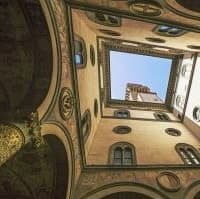
Day 7
Florence to Venice
View More
Day 7
Florence to Venice






Morning/Mid-Day
Piazza Della Signoria: The Heart of Renaissance Florence
Piazza Della Signoria represents the very soul of Renaissance Florence and Italy. It was here in the Palazzo Vecchio that the rulers of Florence began commissioning work from the great masters of the Florentine, Roman and Venetian art world before they moved across the Arno River to Palazzo Pitti. The piazza remains an open-air sculpture museum, with eye-catching works such as the Neptune Fountain. Nearby the world famous Bargello Gallery contains the overflow of masterpieces from the Uffizi Gallery, including Donatella's famous rendering of David, while the Loggia dei Lanzi houses some of the greatest statuary to have come out of Renaissance Italy. The piazza is still the most popular meeting point in the city, particularly during political campaigns when speakers address the crowds from the terrace in front of the Palazzo Vecchio.

Palazzo Vecchio
Venture into the richly-adorned chambers of the palace from which Florence and Tuscany were governed for centuries.
Show More

Bargello Museum
Escape the crowds to visit this gallery filled with the greatest works of Renaissance sculpture.
Show More

Loggia dei Lanzi
See Florence's wealth of sculptural treasures in this 14th-century open-air gallery.
Show More

Palazzo Vecchio
Venture into the richly-adorned chambers of the palace from which Florence and Tuscany were governed for centuries.
Show More

Bargello Museum
Escape the crowds to visit this gallery filled with the greatest works of Renaissance sculpture.
Show More

Loggia dei Lanzi
See Florence's wealth of sculptural treasures in this 14th-century open-air gallery.
Show More

Palazzo Vecchio
Venture into the richly-adorned chambers of the palace from which Florence and Tuscany were governed for centuries.
Show More
prev
next

Day 7
Florence to Venice
View More

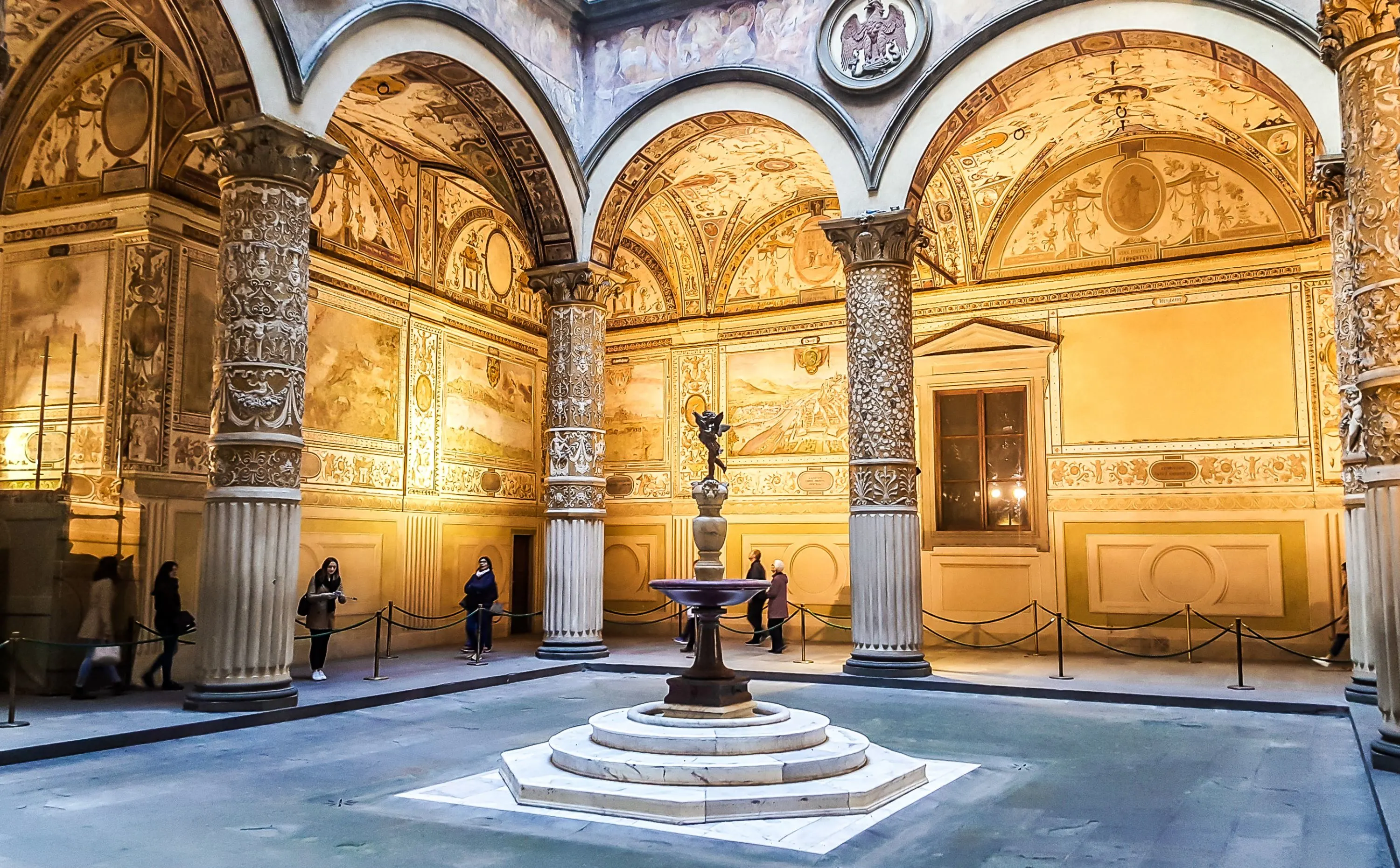
Palazzo Vecchio
 Highlight of Piazza Della Signoria
Highlight of Piazza Della SignoriaVenture into the richly-adorned chambers of the palace from which Florence and Tuscany were governed for centuries.
The fortress-like Palazzo Vecchio was originally constructed around 1299 to house the government administration, but underwent many reconstructions and was utlized for many purposes over the following centuries. Visiting the palazzo is usually a lot simpler than lining up with the crowds next door trying to get into the Uffizi Gallery. You simply need to go through the courtyard at the front entrance to the ticket office where the queues should be relatively short. Highlights of the palace include the magnificent inner courtyard, the chancery once used by Machiavelli, and the lovely Sala delle Carte decorated with 57 maps painted in 1563 depicting what was then the entire known world.
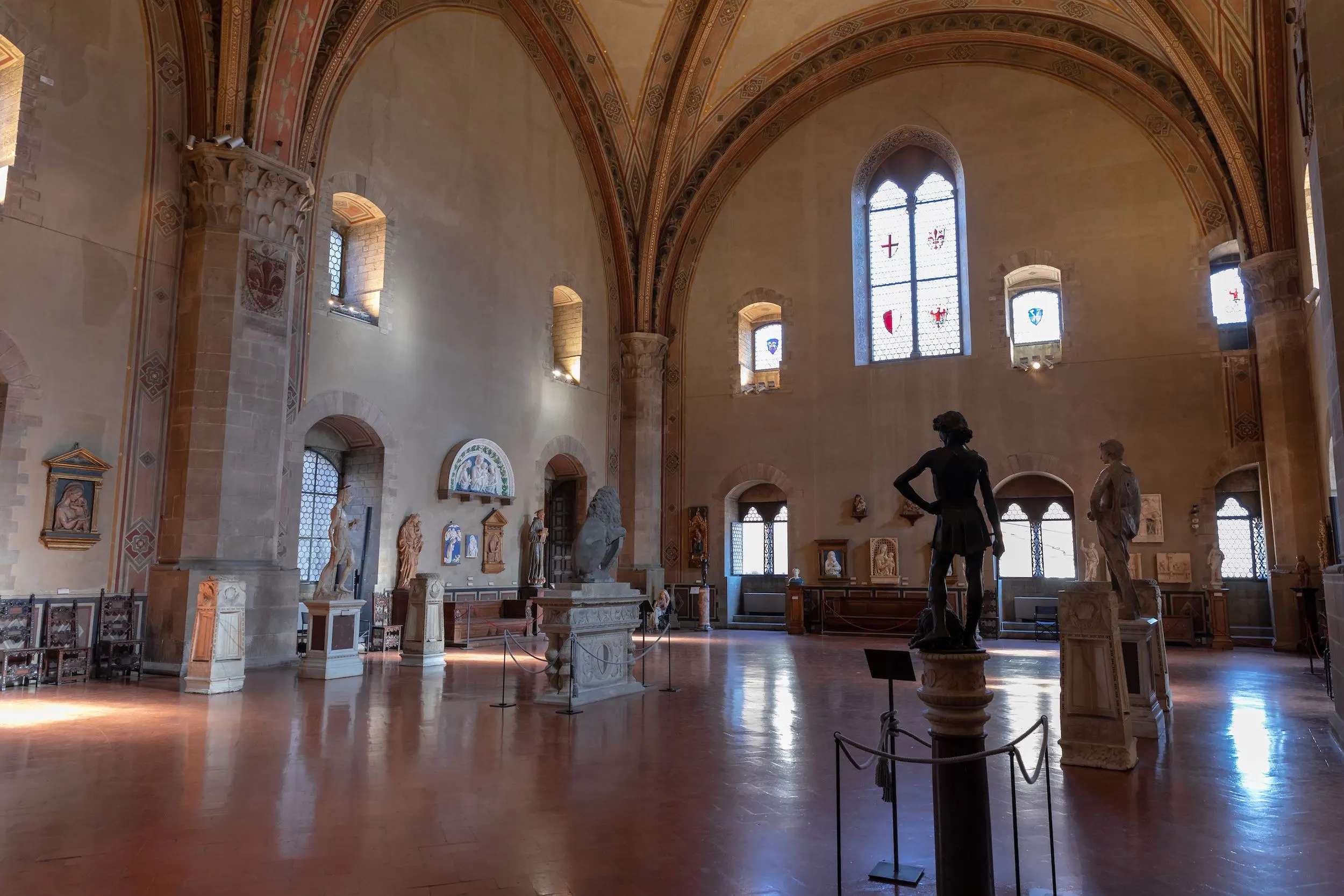
Bargello Museum
 Highlight of Piazza Della Signoria
Highlight of Piazza Della SignoriaEscape the crowds to visit this gallery filled with the greatest works of Renaissance sculpture.
The Palazzo del Bargello dates back to 1255 and was the former residence of the chief of police (Bargello means police station). But in 1865 it was transformed into a museum containing the richest collection of Renaissance sculpture in Italy, although it is thankfully free of the huge crowds that are attracted to the Uffizi. You'll encounter masterpieces by Michelango, Donatello, Cellini, and many others.
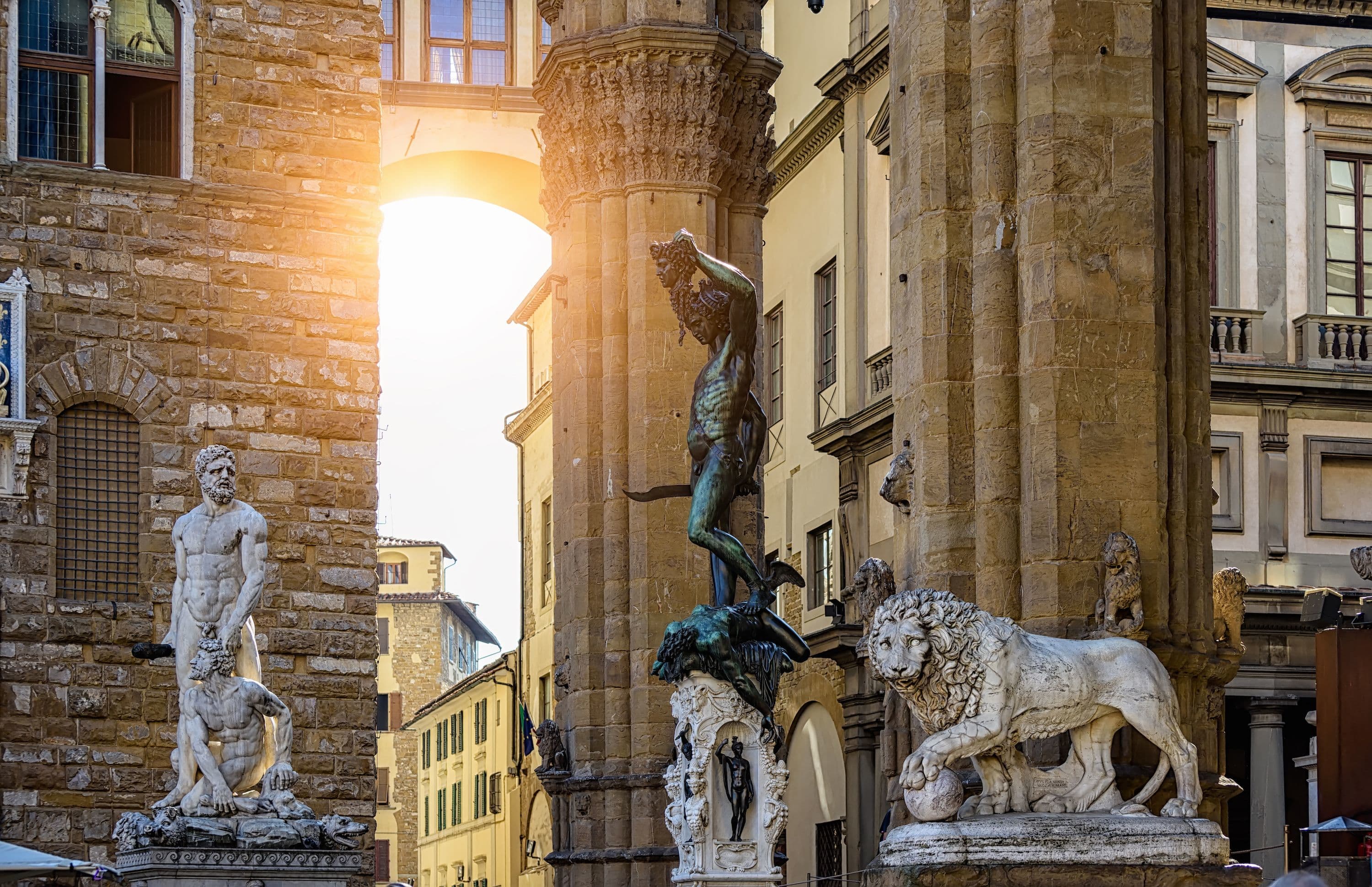
Loggia dei Lanzi
 Highlight of Piazza Della Signoria
Highlight of Piazza Della SignoriaSee Florence's wealth of sculptural treasures in this 14th-century open-air gallery.
Originally completed in 1382 as a platform for the swearing in of public officials and other state affairs, it was only in the late 18th century that the Loggia was reserved exclusively for the display of the city's greatest exponents of sculpture. In the corner by the palazzo is a copy of one of the Renaissance's most iconic works, Benvenuto Cellini's Perseus Trampling Medusa (1545). If you examine the sculpture from the back, you can see the self-image of the sculptor Cellini on the backside of Perseus' helmet. Another headturner is Giambologna's Rape of the Sabine Woman, created from the largest single piece of sculptural marble ever seen in Florence.

Palazzo Vecchio
 Highlight of Piazza Della Signoria
Highlight of Piazza Della SignoriaVenture into the richly-adorned chambers of the palace from which Florence and Tuscany were governed for centuries.
The fortress-like Palazzo Vecchio was originally constructed around 1299 to house the government administration, but underwent many reconstructions and was utlized for many purposes over the following centuries. Visiting the palazzo is usually a lot simpler than lining up with the crowds next door trying to get into the Uffizi Gallery. You simply need to go through the courtyard at the front entrance to the ticket office where the queues should be relatively short. Highlights of the palace include the magnificent inner courtyard, the chancery once used by Machiavelli, and the lovely Sala delle Carte decorated with 57 maps painted in 1563 depicting what was then the entire known world.

Bargello Museum
 Highlight of Piazza Della Signoria
Highlight of Piazza Della SignoriaEscape the crowds to visit this gallery filled with the greatest works of Renaissance sculpture.
The Palazzo del Bargello dates back to 1255 and was the former residence of the chief of police (Bargello means police station). But in 1865 it was transformed into a museum containing the richest collection of Renaissance sculpture in Italy, although it is thankfully free of the huge crowds that are attracted to the Uffizi. You'll encounter masterpieces by Michelango, Donatello, Cellini, and many others.

Loggia dei Lanzi
 Highlight of Piazza Della Signoria
Highlight of Piazza Della SignoriaSee Florence's wealth of sculptural treasures in this 14th-century open-air gallery.
Originally completed in 1382 as a platform for the swearing in of public officials and other state affairs, it was only in the late 18th century that the Loggia was reserved exclusively for the display of the city's greatest exponents of sculpture. In the corner by the palazzo is a copy of one of the Renaissance's most iconic works, Benvenuto Cellini's Perseus Trampling Medusa (1545). If you examine the sculpture from the back, you can see the self-image of the sculptor Cellini on the backside of Perseus' helmet. Another headturner is Giambologna's Rape of the Sabine Woman, created from the largest single piece of sculptural marble ever seen in Florence.

Palazzo Vecchio
 Highlight of Piazza Della Signoria
Highlight of Piazza Della SignoriaVenture into the richly-adorned chambers of the palace from which Florence and Tuscany were governed for centuries.
The fortress-like Palazzo Vecchio was originally constructed around 1299 to house the government administration, but underwent many reconstructions and was utlized for many purposes over the following centuries. Visiting the palazzo is usually a lot simpler than lining up with the crowds next door trying to get into the Uffizi Gallery. You simply need to go through the courtyard at the front entrance to the ticket office where the queues should be relatively short. Highlights of the palace include the magnificent inner courtyard, the chancery once used by Machiavelli, and the lovely Sala delle Carte decorated with 57 maps painted in 1563 depicting what was then the entire known world.
prev
next

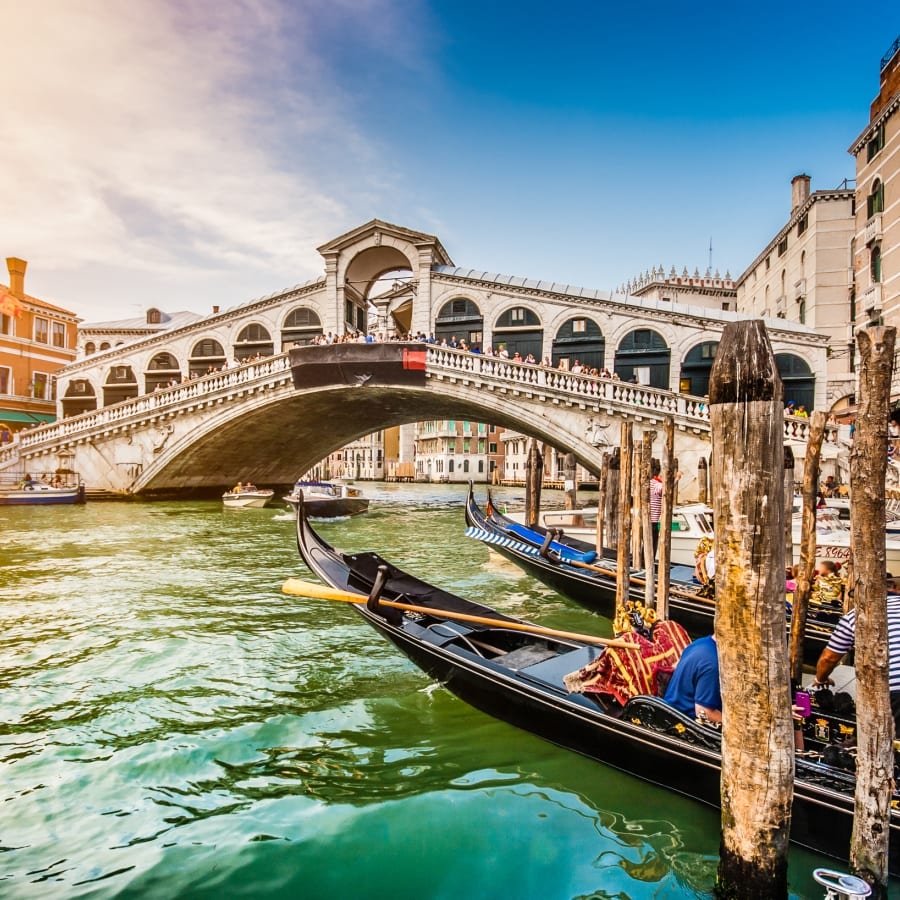
Day 8
Venice
View More
Day 8
Venice



Morning/Mid-Day
Rialto Bridge & San Polo District
The graceful arch of the Rialto Bridge is perhaps the single most iconic sight in Venice since nearly everyone passes beneath it on their journey along the Grand Canal. It connects Venice's two most visited districts, San Marco and San Polo. While San Marco is famous for St. Mark's Square, San Polo more than holds its own as a must-see destination, as it contains some of the city's oldest neighborhoods and most picturesque canals and bridges. It is also home to some of the best restaurants in Venice, and admittedly some of its worst tourist traps as well. Among many highlights is the bustling Rialto Market, which was once one of medieval Europe's busiest financial and trade markets, and still does a brisk trade in fresh seafood and produce.

Frari Church
Step inside this inconspicuous Gothic 15th-century church to discover some of Venice's most famous tombs and artwork.
Show More

Scuola Grande di San Rocco
Visit this underrated art museum featuring works by the famed Renaissance artist Tintoretto.
Show More
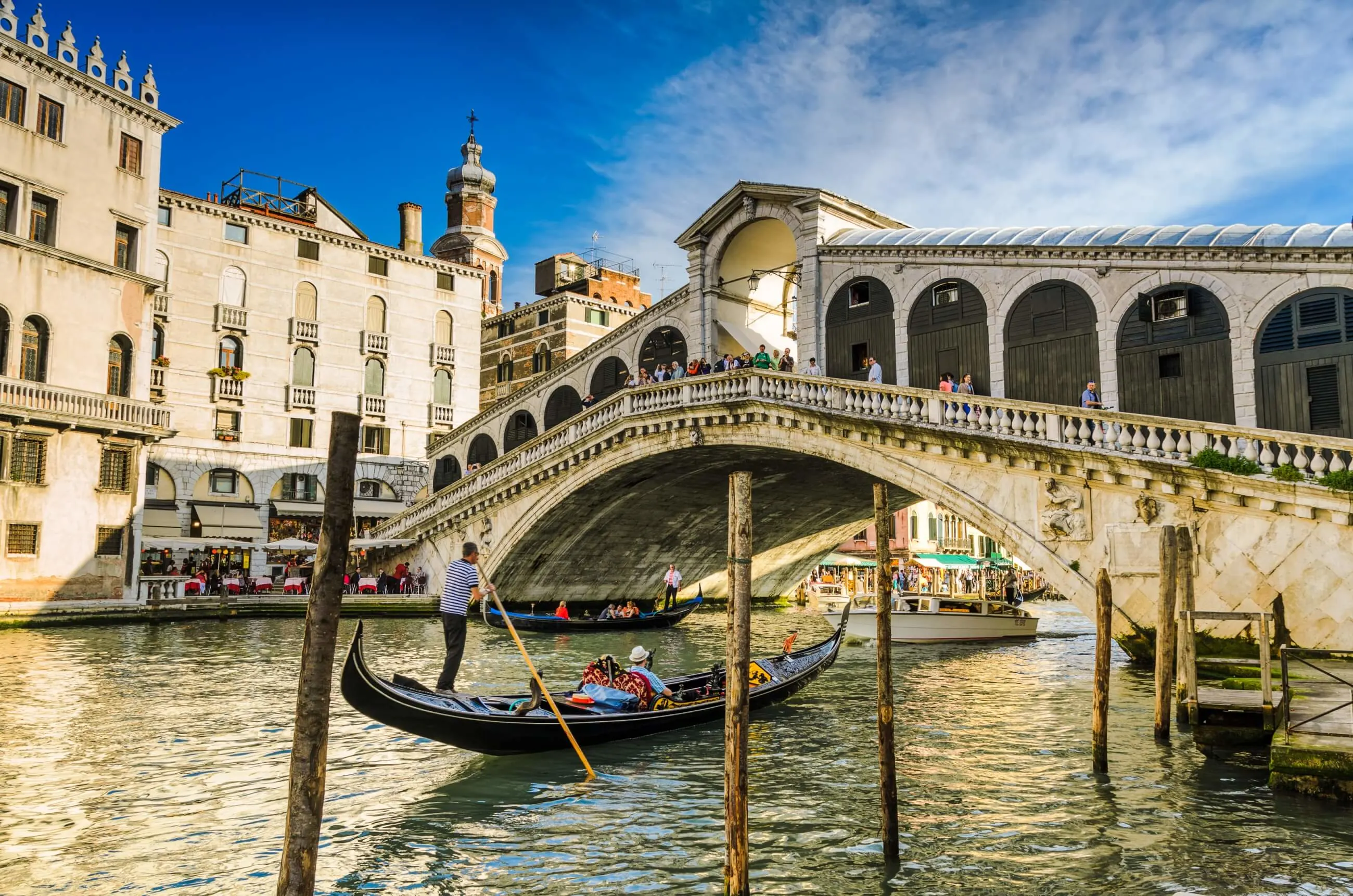
Rialto Bridge
Walk over or ride under the most famous bridge on the Grand Canal.
Show More

Rialto Markets
Experience the sights, tastes, and smells of Venice's historic "Pescaria" fish market, as well as the fresh produce market.
Show More

Frari Church
Step inside this inconspicuous Gothic 15th-century church to discover some of Venice's most famous tombs and artwork.
Show More

Scuola Grande di San Rocco
Visit this underrated art museum featuring works by the famed Renaissance artist Tintoretto.
Show More

Rialto Bridge
Walk over or ride under the most famous bridge on the Grand Canal.
Show More

Rialto Markets
Experience the sights, tastes, and smells of Venice's historic "Pescaria" fish market, as well as the fresh produce market.
Show More
prev
next

Day 8
Venice
View More

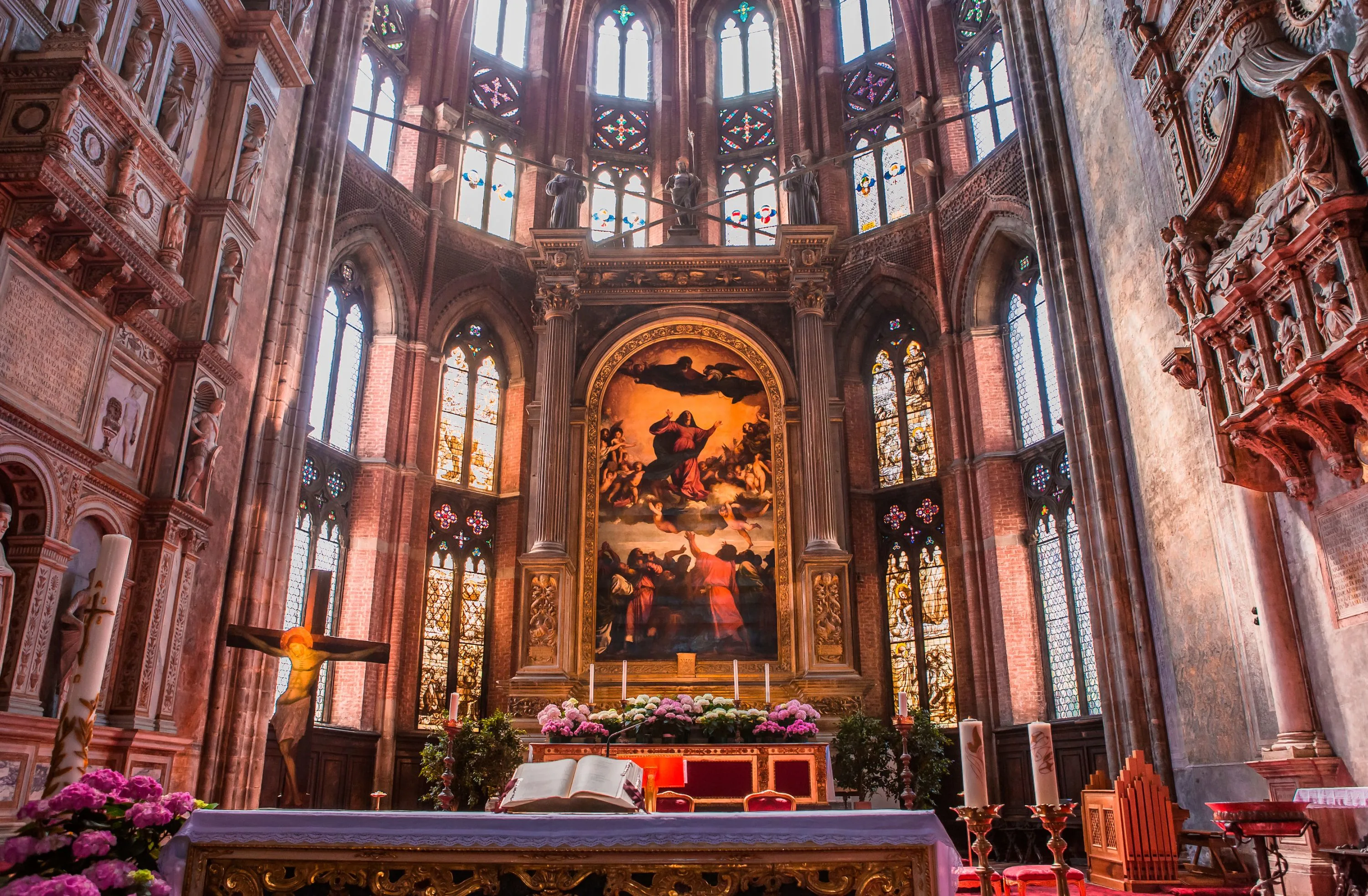
Frari Church
 Highlight of San Polo District
Highlight of San Polo DistrictStep inside this inconspicuous Gothic 15th-century church to discover some of Venice's most famous tombs and artwork.
The relatively austere brick Gothic Church of Santa Maria Gloriosa dei Frari holds many surprises. It has the second tallest campanile in Venice after St Mark's, and contains numerous masterpieces of painting and sculpture by the likes of Titian, Bellini and Donatello, plus a number of important doges' tombs, as well as Titian's tomb. Titian's majestic painting of The Assumption in the sanctuary, with its dramatic movement and coloring, is the work that established Titian's reputation as one of the greatest of all Italian painters. Even if you feel you've seen too many churches already, this one is definitely worth visiting and we recommend investing in the audio guide to get the best out of your time here.
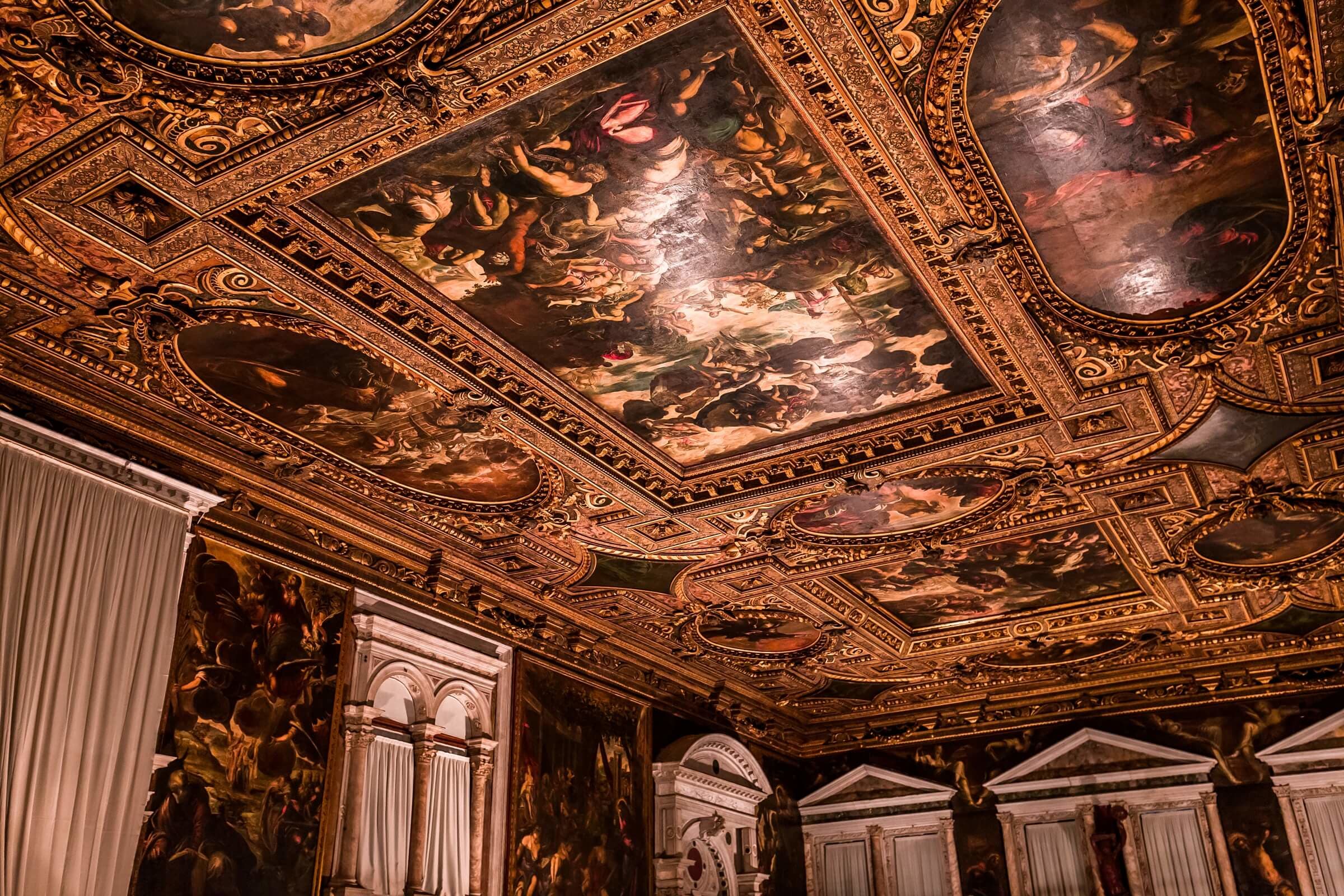
Scuola Grande di San Rocco
 Highlight of San Polo District
Highlight of San Polo DistrictVisit this underrated art museum featuring works by the famed Renaissance artist Tintoretto.
Next door to the Frari, one of the most magnificent of Venice's charitable associations, The Scuola Grande di San Rocco is one of the most magnificent of Venice's charitable associations. The building was completed in 1560, and Tintoretto won a competition held to select an artist to decorate the interior. Over the next 23 years, he executed an incomparable series of paintings that cover the walls and ceilings. According to the writer Jan Morris, "no collection of sacred pictures is more overwhelming of impact than the immense series of Tintorettos in the Scuola [...] - often dark, often grandiose, often incomprehensible, but culminating in the huge masterpiece of the Crucifixion, which Velazquez humbly copied, and before which, to this day, you may still see strong men moved to tears."

Rialto Bridge
 Highlight of San Polo District
Highlight of San Polo DistrictWalk over or ride under the most famous bridge on the Grand Canal.
The 16th-century Rialto Bridge is the most iconic bridge in Venice. With a width of other 75 feet (23m) and span of over 100 feet (31m), the wide stone footbridge crosses over the Grand Canal and connects the San Marco and San Polo districts. It stands on the spot of an earlier wooden drawbridge which collapsed under the weight of a crowd gathered on it to watch a wedding procession. It took almost 150 years before the current Rialto bridge was built, this time in stone, and thus still stands as a symbol of the city. Surrounded by tourist shops and pricey restaurants, it sits on 12,000 wooden pilings and will be forever immortalised in millions of photographs as the backdrop to the classic Venetian photo shot, which captures the city's gondolas as they ferry lovers around the Grand Canal. While for many a gondola ride is a must-do experience in Venice, it's also possible to admire the bridge on foot. For a less-pricey way of seeing it from the water, you can always take the Number 1 local Vaporetto (water bus) and see the bridge as you pass underneath.
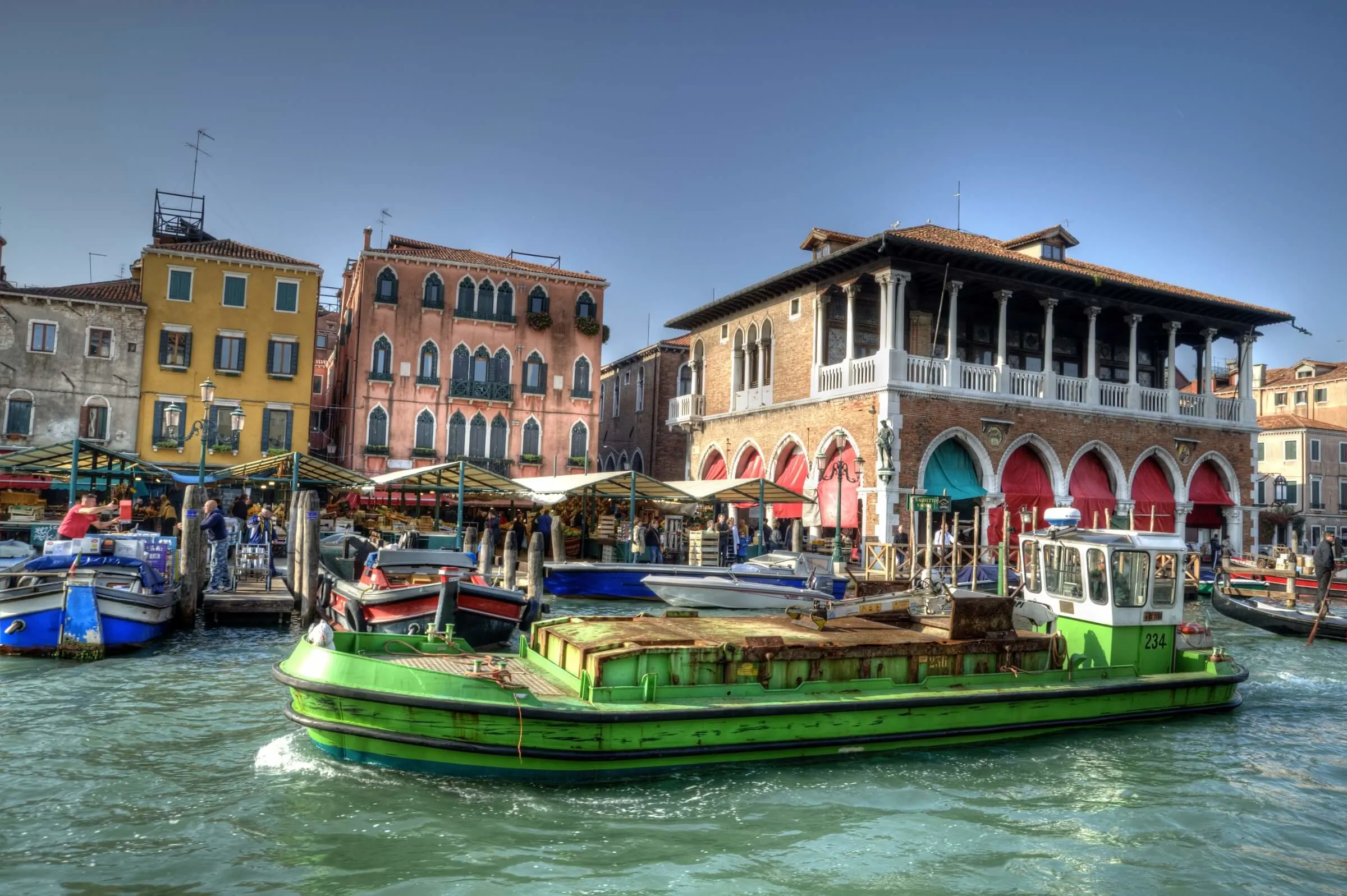
Rialto Markets
 Highlight of San Polo District
Highlight of San Polo DistrictExperience the sights, tastes, and smells of Venice's historic "Pescaria" fish market, as well as the fresh produce market.
Located close to the Rialto Bridge stands the Rialto Market, "the incomparable fish market of Venice, a glorious wet, colorful, high-smelling concourse of the sea, to which in the down hours fleets of barges bring the day's supply of sea-foods" (Jan Morris). Established well before the bridge was built, Venice's iconic market is a sight to behold, with colourful vegetable stalls and loud market vendors touting for business. It is a great spot for photographs and of course for a taste of the freshly caught fish with a host of appetising snacks on offer. Adjacent to the fish market you'll find a produce market, which is also important for a city which demands fresh ingredients for its cuisine. Keep in mind that the markets close at 1pm, and both markets are closed on Sundays (the fish market is also closed on Mondays).

Frari Church
 Highlight of San Polo District
Highlight of San Polo DistrictStep inside this inconspicuous Gothic 15th-century church to discover some of Venice's most famous tombs and artwork.
The relatively austere brick Gothic Church of Santa Maria Gloriosa dei Frari holds many surprises. It has the second tallest campanile in Venice after St Mark's, and contains numerous masterpieces of painting and sculpture by the likes of Titian, Bellini and Donatello, plus a number of important doges' tombs, as well as Titian's tomb. Titian's majestic painting of The Assumption in the sanctuary, with its dramatic movement and coloring, is the work that established Titian's reputation as one of the greatest of all Italian painters. Even if you feel you've seen too many churches already, this one is definitely worth visiting and we recommend investing in the audio guide to get the best out of your time here.

Scuola Grande di San Rocco
 Highlight of San Polo District
Highlight of San Polo DistrictVisit this underrated art museum featuring works by the famed Renaissance artist Tintoretto.
Next door to the Frari, one of the most magnificent of Venice's charitable associations, The Scuola Grande di San Rocco is one of the most magnificent of Venice's charitable associations. The building was completed in 1560, and Tintoretto won a competition held to select an artist to decorate the interior. Over the next 23 years, he executed an incomparable series of paintings that cover the walls and ceilings. According to the writer Jan Morris, "no collection of sacred pictures is more overwhelming of impact than the immense series of Tintorettos in the Scuola [...] - often dark, often grandiose, often incomprehensible, but culminating in the huge masterpiece of the Crucifixion, which Velazquez humbly copied, and before which, to this day, you may still see strong men moved to tears."

Rialto Bridge
 Highlight of San Polo District
Highlight of San Polo DistrictWalk over or ride under the most famous bridge on the Grand Canal.
The 16th-century Rialto Bridge is the most iconic bridge in Venice. With a width of other 75 feet (23m) and span of over 100 feet (31m), the wide stone footbridge crosses over the Grand Canal and connects the San Marco and San Polo districts. It stands on the spot of an earlier wooden drawbridge which collapsed under the weight of a crowd gathered on it to watch a wedding procession. It took almost 150 years before the current Rialto bridge was built, this time in stone, and thus still stands as a symbol of the city. Surrounded by tourist shops and pricey restaurants, it sits on 12,000 wooden pilings and will be forever immortalised in millions of photographs as the backdrop to the classic Venetian photo shot, which captures the city's gondolas as they ferry lovers around the Grand Canal. While for many a gondola ride is a must-do experience in Venice, it's also possible to admire the bridge on foot. For a less-pricey way of seeing it from the water, you can always take the Number 1 local Vaporetto (water bus) and see the bridge as you pass underneath.

Rialto Markets
 Highlight of San Polo District
Highlight of San Polo DistrictExperience the sights, tastes, and smells of Venice's historic "Pescaria" fish market, as well as the fresh produce market.
Located close to the Rialto Bridge stands the Rialto Market, "the incomparable fish market of Venice, a glorious wet, colorful, high-smelling concourse of the sea, to which in the down hours fleets of barges bring the day's supply of sea-foods" (Jan Morris). Established well before the bridge was built, Venice's iconic market is a sight to behold, with colourful vegetable stalls and loud market vendors touting for business. It is a great spot for photographs and of course for a taste of the freshly caught fish with a host of appetising snacks on offer. Adjacent to the fish market you'll find a produce market, which is also important for a city which demands fresh ingredients for its cuisine. Keep in mind that the markets close at 1pm, and both markets are closed on Sundays (the fish market is also closed on Mondays).
prev
next

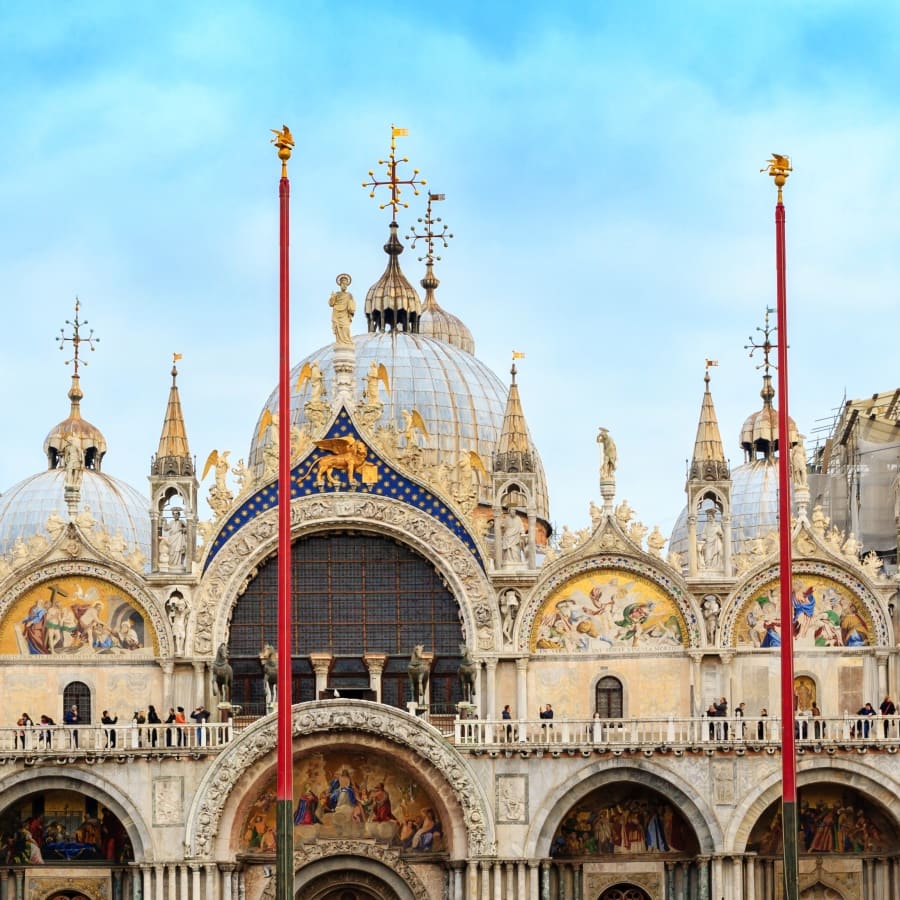
Day 9
Venice
View More
Day 9
Venice


9:00 AM - 12:00 PM
'First Walk' Guided Tour in Venice
If you are a first-time visitor to Venice, the best approach is an introductory tour. This 3-hour private guided walking excursion begins with a selection of the “must sees,” including St. Mark's Square, the former political center of the Venetian Republic, with its many famous buildings: the Doges' Palace, the Bridge of Sighs, the Marciana Library, the Bell Tower, and the Clock Tower. You'll end your tour in the Rialto neighborhood next to the famous Rialto Bridge.

Doges' Palace
Explore the staterooms and masterpieces inside this famous Gothic-style Palace.
Show More

Doges' Palace
Explore the staterooms and masterpieces inside this famous Gothic-style Palace.
Show More

Doges' Palace
Explore the staterooms and masterpieces inside this famous Gothic-style Palace.
Show More

Doges' Palace
Explore the staterooms and masterpieces inside this famous Gothic-style Palace.
Show More

Doges' Palace
Explore the staterooms and masterpieces inside this famous Gothic-style Palace.
Show More
prev
next

Day 9
Venice
View More

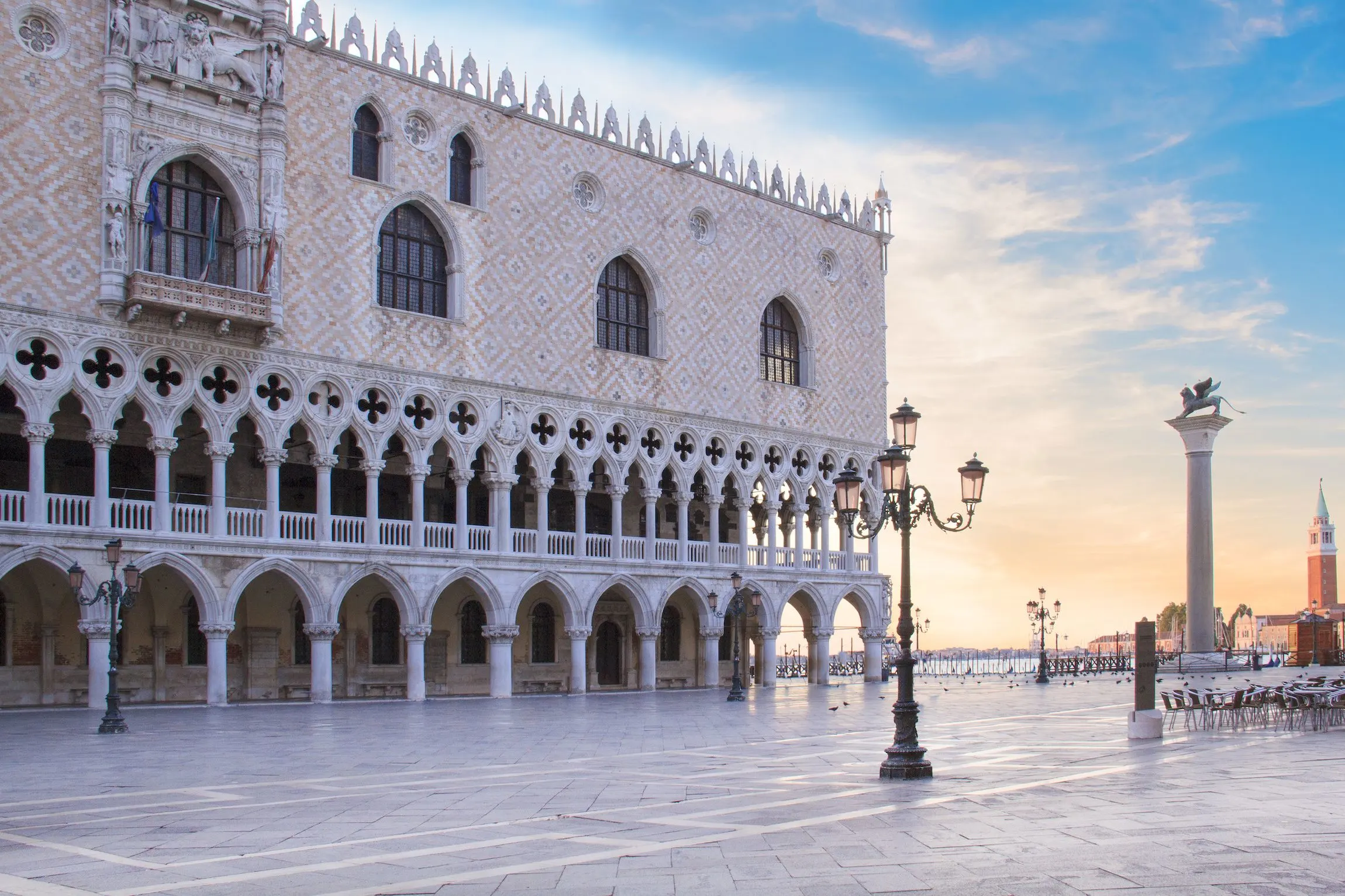
Doges' Palace
 Highlight of 'First Walk', Guided Tour in Venice
Highlight of 'First Walk', Guided Tour in VeniceExplore the staterooms and masterpieces inside this famous Gothic-style Palace.
Important Note: Entry lines can be very long. We suggest taking advantage of skip the line entry. As the name suggests, the Palace was the official residence of the Venetian rulers, the Doges, and the chief magistrates. The building was founded in the 9th century, but the present one dates from the 14th century. Tour its elaborate staterooms, grand halls and the 24-carat golden staircase before seeking out its collection of priceless masterpieces by Venetian artists including Titan, Veronese and Tintoretto. Be sure to spend some time in the most incredible room of all, the Chamber of the Great Council, the assembly hall where all Venetian patricians gathered to participate in the running of the city - up to 2,500 at any one time. There you will find the Doge's throne and the world's longest canvas painting in the world, Tintoretto's Il Paradiso.

Doges' Palace
 Highlight of 'First Walk', Guided Tour in Venice
Highlight of 'First Walk', Guided Tour in VeniceExplore the staterooms and masterpieces inside this famous Gothic-style Palace.
Important Note: Entry lines can be very long. We suggest taking advantage of skip the line entry. As the name suggests, the Palace was the official residence of the Venetian rulers, the Doges, and the chief magistrates. The building was founded in the 9th century, but the present one dates from the 14th century. Tour its elaborate staterooms, grand halls and the 24-carat golden staircase before seeking out its collection of priceless masterpieces by Venetian artists including Titan, Veronese and Tintoretto. Be sure to spend some time in the most incredible room of all, the Chamber of the Great Council, the assembly hall where all Venetian patricians gathered to participate in the running of the city - up to 2,500 at any one time. There you will find the Doge's throne and the world's longest canvas painting in the world, Tintoretto's Il Paradiso.

Doges' Palace
 Highlight of 'First Walk', Guided Tour in Venice
Highlight of 'First Walk', Guided Tour in VeniceExplore the staterooms and masterpieces inside this famous Gothic-style Palace.
Important Note: Entry lines can be very long. We suggest taking advantage of skip the line entry. As the name suggests, the Palace was the official residence of the Venetian rulers, the Doges, and the chief magistrates. The building was founded in the 9th century, but the present one dates from the 14th century. Tour its elaborate staterooms, grand halls and the 24-carat golden staircase before seeking out its collection of priceless masterpieces by Venetian artists including Titan, Veronese and Tintoretto. Be sure to spend some time in the most incredible room of all, the Chamber of the Great Council, the assembly hall where all Venetian patricians gathered to participate in the running of the city - up to 2,500 at any one time. There you will find the Doge's throne and the world's longest canvas painting in the world, Tintoretto's Il Paradiso.

Doges' Palace
 Highlight of 'First Walk', Guided Tour in Venice
Highlight of 'First Walk', Guided Tour in VeniceExplore the staterooms and masterpieces inside this famous Gothic-style Palace.
Important Note: Entry lines can be very long. We suggest taking advantage of skip the line entry. As the name suggests, the Palace was the official residence of the Venetian rulers, the Doges, and the chief magistrates. The building was founded in the 9th century, but the present one dates from the 14th century. Tour its elaborate staterooms, grand halls and the 24-carat golden staircase before seeking out its collection of priceless masterpieces by Venetian artists including Titan, Veronese and Tintoretto. Be sure to spend some time in the most incredible room of all, the Chamber of the Great Council, the assembly hall where all Venetian patricians gathered to participate in the running of the city - up to 2,500 at any one time. There you will find the Doge's throne and the world's longest canvas painting in the world, Tintoretto's Il Paradiso.

Doges' Palace
 Highlight of 'First Walk', Guided Tour in Venice
Highlight of 'First Walk', Guided Tour in VeniceExplore the staterooms and masterpieces inside this famous Gothic-style Palace.
Important Note: Entry lines can be very long. We suggest taking advantage of skip the line entry. As the name suggests, the Palace was the official residence of the Venetian rulers, the Doges, and the chief magistrates. The building was founded in the 9th century, but the present one dates from the 14th century. Tour its elaborate staterooms, grand halls and the 24-carat golden staircase before seeking out its collection of priceless masterpieces by Venetian artists including Titan, Veronese and Tintoretto. Be sure to spend some time in the most incredible room of all, the Chamber of the Great Council, the assembly hall where all Venetian patricians gathered to participate in the running of the city - up to 2,500 at any one time. There you will find the Doge's throne and the world's longest canvas painting in the world, Tintoretto's Il Paradiso.
prev
next


Day 10
Depart Venice
View More
Day 10
Depart Venice

To Be Determined
Transfer to Airport by Taxi or Water Bus
Most visitors will depart from the Venice Marco Polo Airport, which is located just across the water on the mainland. Because of the impossibility of driving inside Venice, you will need to take a water bus to Piazzale Roma on the edge of the city and then a land taxi to the airport (40 EUR), or take a water bus directly to the airport (15 EUR). It is also possible to take a private water taxi directly from your hotel to the airport, but it's very expensive. If you are departing from Venice Treviso Airport, you have much further to go. You can either take an expensive taxi ride (about 100 EUR) or take a shuttle bus for 12 EUR. The ATVO line departs from Piazzale Roma and takes 70 minutes, while the Barzi line picks up at the less convenient Tronchetto (the docks) but only takes 40 minutes.

Day 10
Depart Venice
View More


What's Included In Your Trip

Pre-Paid Tours and Activities:
- Heart of the Empire - Private Tour of Ancient Rome & the Colosseum
- Best of Florence: Half-Day Walking Tour
- 'First Walk' Guided Tour in Venice
- City Card for Rome, including discounts to many popular attractions

Pre-Paid Transportation:
- 2nd Class Train Tickets from Roma Termini to Firenze S.M.N.
- 2nd Class Train Tickets from Firenze S.M.N. to Venezia Santa Lucia
- Public Transport Tickets for Venice and Rome
- Private Transfer from Rome Fiumicino to Hotel
- Private Transfer to Rome Termini Train Station

Accommodation:
- 4 nights at a hotel of your choice in Rome
- 4 nights at a hotel of your choice in Florence
- 4 nights at a hotel of your choice in Venice

Go Real Travel Mobile App:
- Itinerary Plan & Reservations Info
- Points of Interest
- Detailed Travel Information
- Maps & Directions
Other Trips You May Like

12 Days
From$3175USD

10 Days
From$4600USD

12 Days
From$2999USD

15 Days
From$4266USD

7 Days
From$2139USD
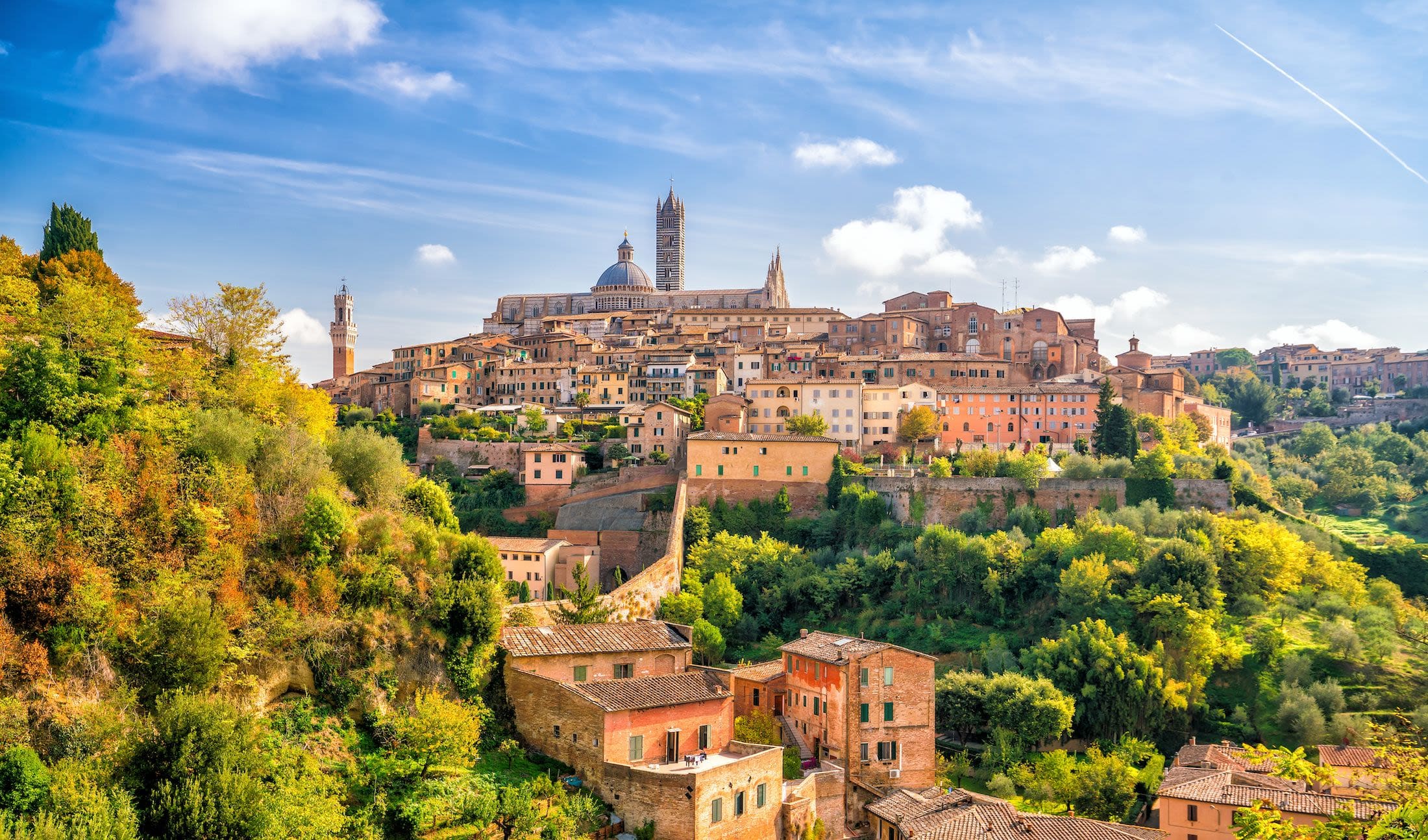
14 Days
From$3559USD

10 Days
From$4033USD
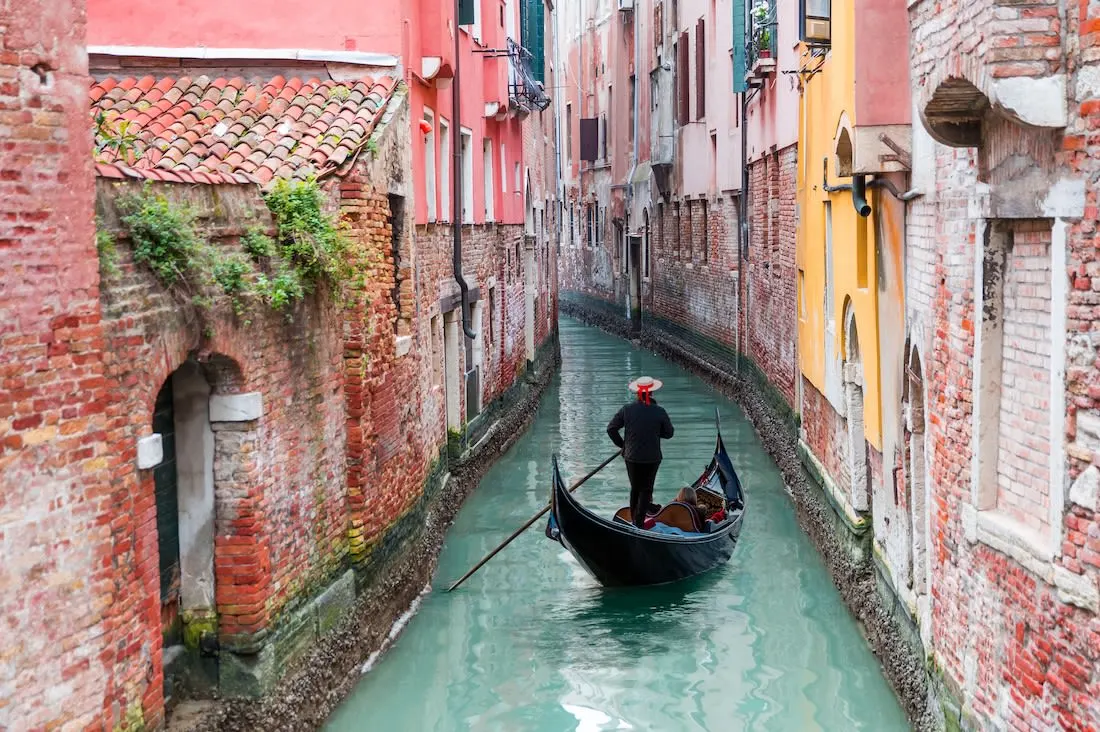
8 Days
From$2424USD

12 Days
From$3129USD

12 Days
From$3175USD

10 Days
From$4600USD

12 Days
From$2999USD

15 Days
From$4266USD

7 Days
From$2139USD

14 Days
From$3559USD

10 Days
From$4033USD

8 Days
From$2424USD

12 Days
From$3129USD
prev
next
Featured Blogs
prev
next
Our Customers Say It Best
Otto Chuy, Los Angeles, California
I am still surprised how everything worked as planned, without a hitch. All instructions in your itinerary were precise and correct. Your suggestions and comments in each of the locations we went to were very helpful. All your guides, without exception, were wonderful and exactly on time. 

Kathy Mongeau, Ottawa, Ontario
My sister, Ann Ibberson, and I have been back home for a few weeks now and still go on and on about our fabulous trip. We were just blown away in every respect. Given the fact that we only had 1 ½ weeks, you had everything arranged for us so efficiently and your contacts who we dealt with for transfers, tours, hotels were extremely professional and personable. Things could not have gone better. 

Clive Andrew, Brisbane, Queensland
Just a quick note to let you know that I am back home now after probably the best overseas holiday that I have ever had, in no small part due to your very capable organization booking of hotels, tours, & trains. There was just nothing that went wrong with the timings etc. 

Malini Dutta, Boston, Massachusetts
We can't thank you enough for the detailed plans, maps, and suggestions. It really felt that someone was holding our hands and showing us around. We had all the excitement of discovering foreign lands, with none of the problems that can happen while negotiating unfamiliar places. In fact, all the cities felt like home within a few hours of arriving and exploring. 

Bev and Mark Frankel, Williamsburg, Virginia
We could not be more pleased with Go Real Travel! You took the guess work out of things like public transport but still managed to allow us the freedom to tour as we wanted. Our guides were exceptional and every time I saw a Viking Cruise tour of 25 people, I realized the quality experience we were getting with Go Real. 

Marianne Strydom, Paarl, South Africa
I just wanted to thank you for organizing an amazing trip for me – I packed in so much in such a short period of time and everything was just perfect. The way you do things makes it possible to really get to know the destination, which for me as a travel agent could not have been better. 

Otto Chuy, Los Angeles, California
I am still surprised how everything worked as planned, without a hitch. All instructions in your itinerary were precise and correct. Your suggestions and comments in each of the locations we went to were very helpful. All your guides, without exception, were wonderful and exactly on time. 

Kathy Mongeau, Ottawa, Ontario
My sister, Ann Ibberson, and I have been back home for a few weeks now and still go on and on about our fabulous trip. We were just blown away in every respect. Given the fact that we only had 1 ½ weeks, you had everything arranged for us so efficiently and your contacts who we dealt with for transfers, tours, hotels were extremely professional and personable. Things could not have gone better. 

Clive Andrew, Brisbane, Queensland
Just a quick note to let you know that I am back home now after probably the best overseas holiday that I have ever had, in no small part due to your very capable organization booking of hotels, tours, & trains. There was just nothing that went wrong with the timings etc. 

Malini Dutta, Boston, Massachusetts
We can't thank you enough for the detailed plans, maps, and suggestions. It really felt that someone was holding our hands and showing us around. We had all the excitement of discovering foreign lands, with none of the problems that can happen while negotiating unfamiliar places. In fact, all the cities felt like home within a few hours of arriving and exploring. 

Bev and Mark Frankel, Williamsburg, Virginia
We could not be more pleased with Go Real Travel! You took the guess work out of things like public transport but still managed to allow us the freedom to tour as we wanted. Our guides were exceptional and every time I saw a Viking Cruise tour of 25 people, I realized the quality experience we were getting with Go Real. 

Marianne Strydom, Paarl, South Africa
I just wanted to thank you for organizing an amazing trip for me – I packed in so much in such a short period of time and everything was just perfect. The way you do things makes it possible to really get to know the destination, which for me as a travel agent could not have been better. 



Explore cities in more detail

Milan
Milan is Italy’s most forward-looking city. An international center for fashion, fine dining, and design, it seems as though Milanese people breathe style. From the gleam on your wine glass to the twists of its cathedral’s spires, everything in Milan is finished to perfection. Home to the Italian stock exchange, a world-famous fashion industry, and a frantic business district, Milan is fast-paced and commercially minded. The shopping in Milan is second to none. At the Galleria Vittorio Emanuele II, one of the world’s oldest shopping malls, a glass-iron ceiling soars over brands like Louis Vuitton, Gucci, Massimo Dutti, and Amani. Along with the fashion, Milan’s cathedral, castle, and canals are also must-sees. But to view the city’s most prized possession - Leonardo da Vinci’s Last Supper, you must make an appointment. Tickets to view this mural sell out weeks in advance. It is truly a bucket-list worthy work of art. After a day taking in all the glamor and culture, take a seat in one of Milan’s well-appointed eateries. The Navigli Quarter is packed with restaurants, bars, and cafes, perfect for a relaxed Aperol spritz or pizza along the city’s canals.
Read More
Learn About Milan
Build Milan Trip

Cinque Terre
Cinque Terre, a string of five fishing villages in the Liguria region of Italy, is a rare snapshot of a traditional way of life. Rustic and charming, these clusters of pastel houses clinging to steep Mediterranean cliffs hold a special allure. Hiking between the five villages is a popular way to experience the rugged Mediterranean landscape close up. There are no roads here — the only other way to get between the villages is by boat or train. Seafood, hauled in from the azure waters of the sea that laps against the rocky shore, is abundant and delicious here. It pairs well with the local wine, and perhaps a plate of olives. Cinque Terre is a place to take it slow, to breathe in the fresh sea air and bask in the balmy climate, many miles from the chaos and frenzy of the modern world.
Read More
Learn About Cinque Terre
Build Cinque Terre Trip
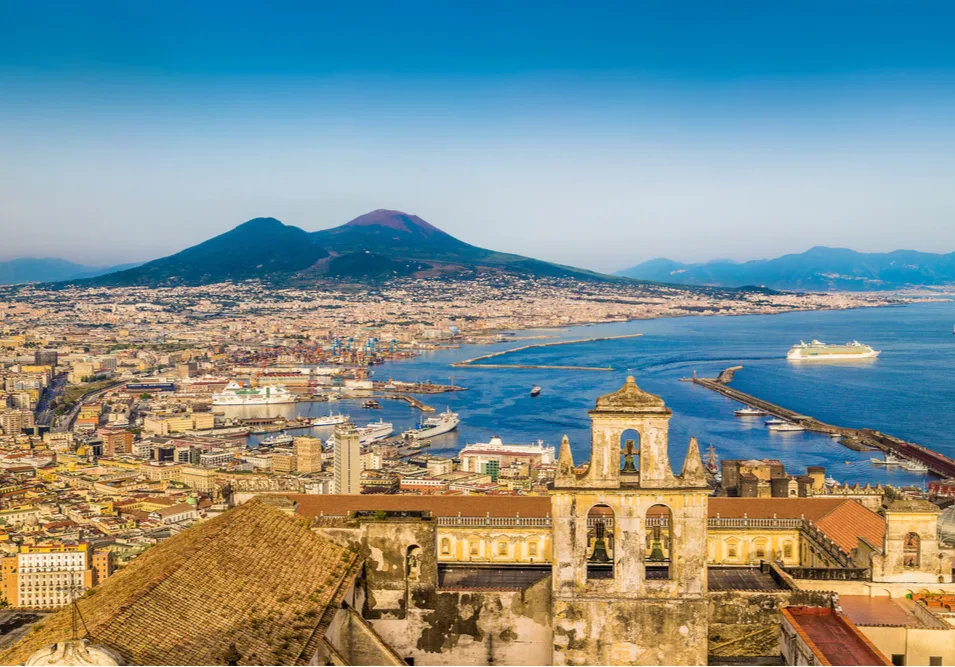
Naples
Gritty and chaotic Naples calls to travelers who want to experience the real Italy. Pressed along the coast of Campania, hilly Naples is jammed with maze-like streets, strung with outdoor clotheslines, descending toward the sea below. A much deserved UNESCO World Heritage site, Naples is famous for its churches, museums, castles, and catacombs. As you navigate the city, you’ll find yourself immersed by its culture and history. You can easily occupy a full day gazing at churches like the Naples Cathedral, San Francesco di Paola, and Cappella Sansevero. If you cast your eyes toward the Gulf of Naples, you’ll see Mount Vesuvius looming over the harbor. This foreboding volcano erupted in AD 79. Not far from the inner city — less than an hour by train — you’ll find the ancient town of Pompeii, its dramatic ruins still preserved in ash from the eruption. One of the best things you can do in Naples is to eat. This is the city where pizza was born. Propped up by its ripe tomatoes, local cheeses, and fresh fish, food from Naples has come to define what many see as the height of Italian cuisine. Everything you taste in Naples seems like a delicacy. Authentic and vivid, Naples is a true Italian city where the ancient world meets the modern-day with a bang.
Read More
Learn About Naples
Build Naples Trip
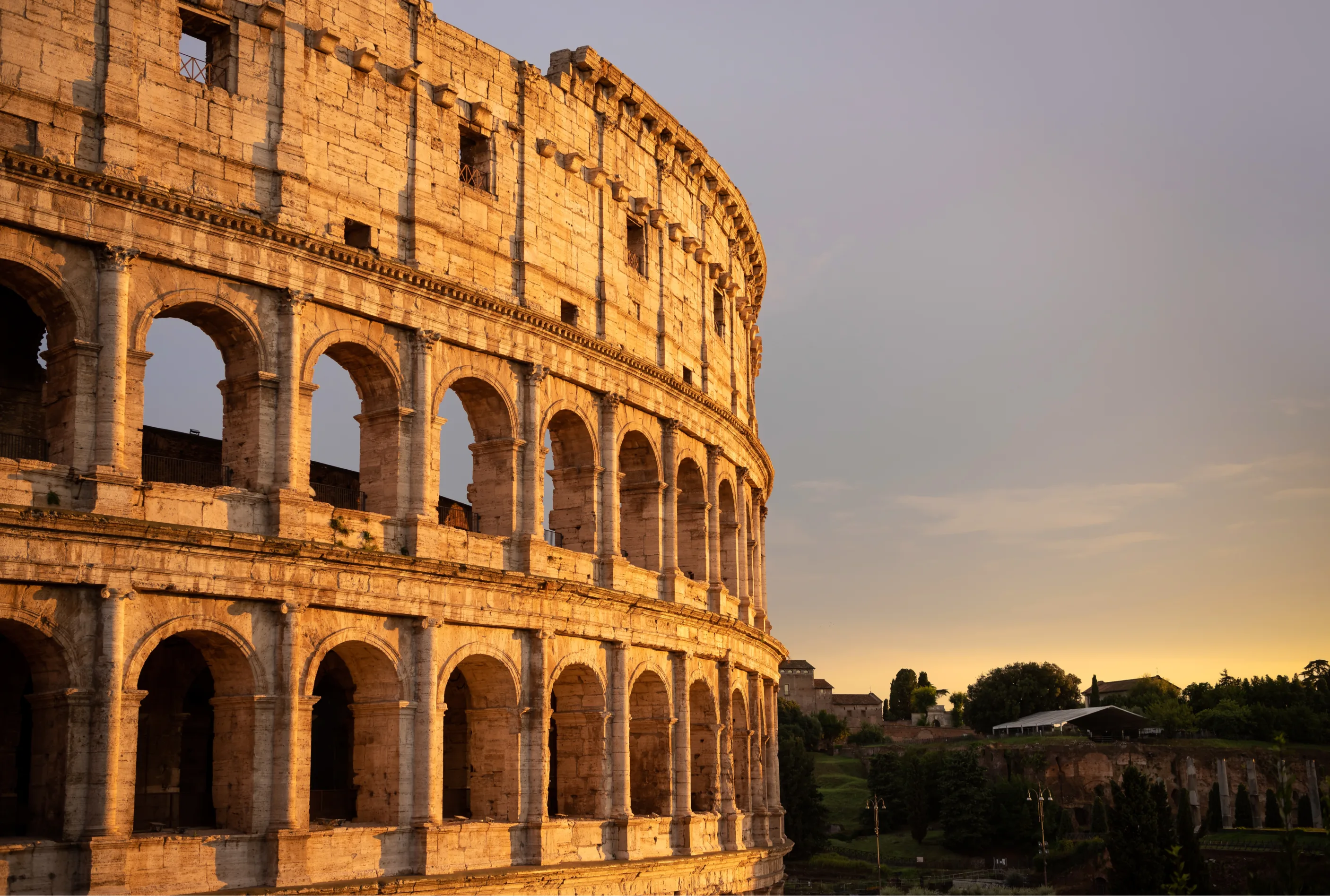
Rome
One of the must-sees of Italy, and indeed all of Europe, Rome is a city with history flowing through its veins. There is an endless amount to see, do, and learn here, with something for every taste and disposition. Rome was the center of Western civilization for a Millenium and during that time, accumulated a list of historical and cultural treasures that no other destination can truly match. The Pantheon, Colosseum, Roman Forum, and Cirus of Maxentius are just a few examples of what can be seen and experienced in Rome, which at times feels more like a giant outdoor museum than a city. At Rome’s heart, you’ll find the Vatican, home of the Roman Catholic Church and the Pope. Here visitors can see the legendary Sistine Chapel. Transcending a mere building, the chapel is a walk-in work of art. Although historical sights can be found on just about every corner, it’s entirely possible to fill a day just wandering around Rome. The city’s charming streets and open Piazzas are filled with beautiful sights and places to sit, grab the best Cappuccino in the world, and enjoy the view.
Read More
Learn About Rome
Build Rome Trip
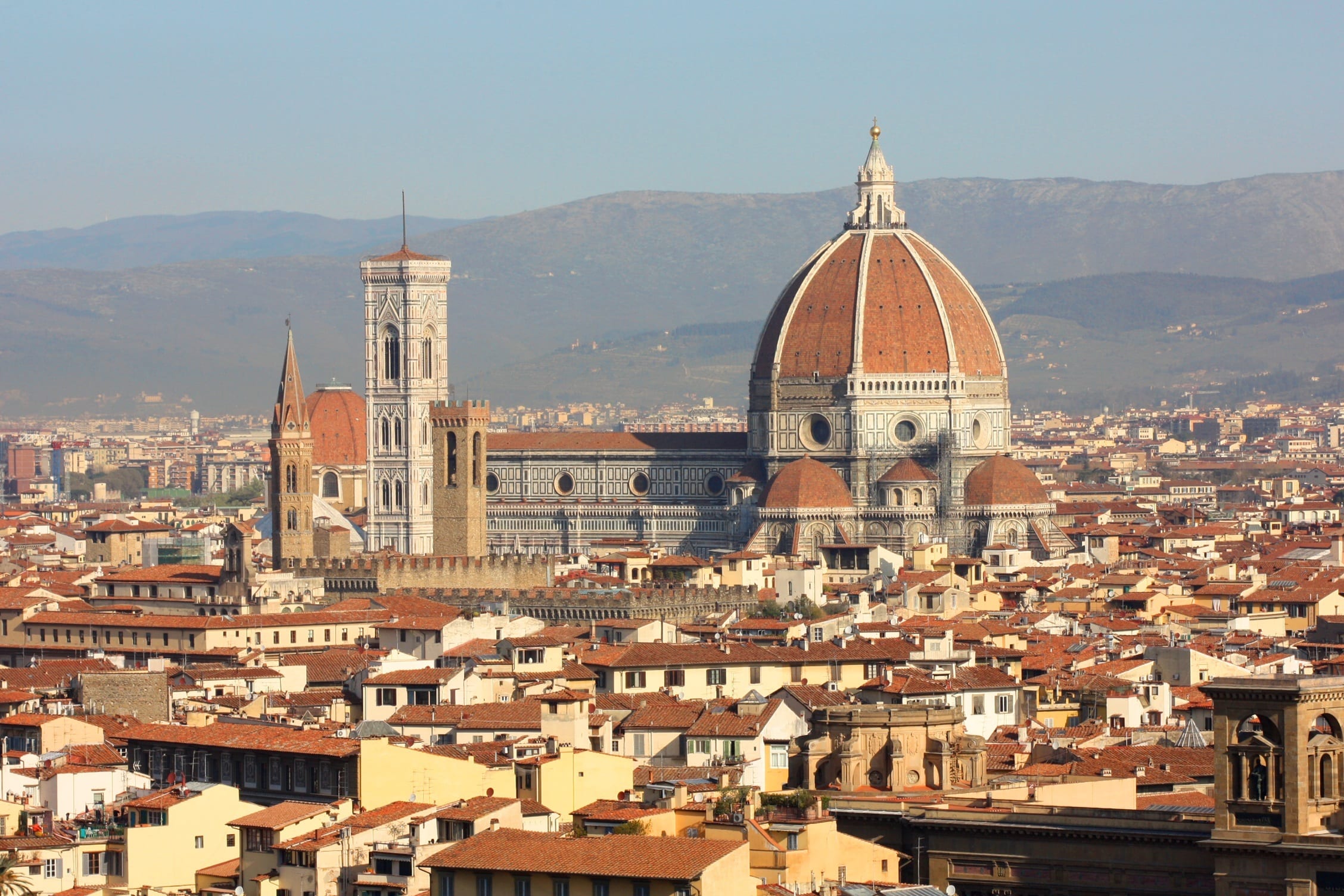
Florence
Culture and history are thick in the air in Florence. Located on the banks of the Arno River in Tuscany, Florence’s past is deeply compelling. The birthplace of the Renaissance, Florence is where innovators like Dante, Machiavelli, Michelangelo, and Da Vinci made their fortunes. Centuries of art, politics, and commerce have left their mark on every stone in this Northern Italian city. In the 15th and 16th centuries, Florentine banks funded new enterprises that went on to change the history of the world. Powerful families like the Medici’s financed some of the finest art in history and pioneered new ways of doing statecraft and politics. As you stand in the Piazzale Michelangelo and gaze upon the city below it’s hard to take it all in at once. It feels like behind every door in Florence might hide a work of genius. Michelangelo’s David and Botticelli’s Primavera can be found just a short walk away. After a long day wandering the streets and gazing at art, fueled by exquisite coffee and gelato, relax like the locals do: with a glass of some of the best wine in the world.
Read More
Learn About Florence
Build Florence Trip
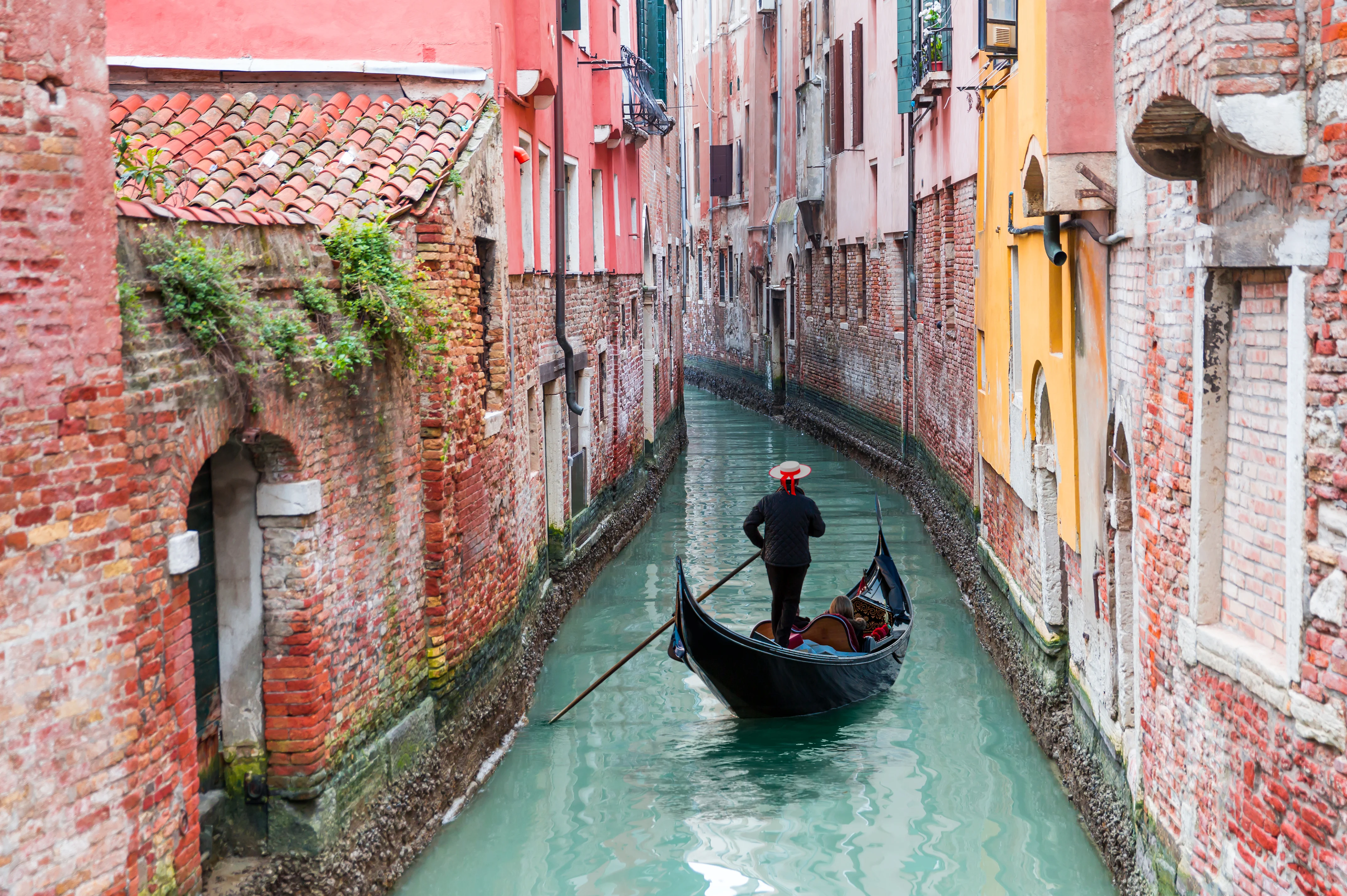
Venice
Venice is a city with no equal. Built on a series of islands on a lagoon, it was once a powerful city-state. Echoes of that old magnificence can be seen everywhere here, from the stunning buildings that rise out of the canals, to the bridges that arc across them. Take a Gondola ride through the canals that form the city’s veins, or wander through the winding streets drinking in the sights. You’ll see Venice attracts tourists in huge numbers, and that’s with good reason. It’s home to a seemingly limitless amount of art, culture, history, and architecture. St Mark’s Basilica, the Doge’s Palace, and the Campanile di San Marco just barely scratch the surface. There’s a 700-year-old market, Rialto, which is still open today. The Ponte di Rialto bridge connects the neighborhoods of San Marco and San Polo, stretching across the Grand Canal. Venice has weathered the last several centuries with elegance and pride, a place that will surpass even your highest expectations.
Read More
Learn About Venice
Build Venice Trip

Milan
Milan is Italy’s most forward-looking city. An international center for fashion, fine dining, and design, it seems as though Milanese people breathe style. From the gleam on your wine glass to the twists of its cathedral’s spires, everything in Milan is finished to perfection. Home to the Italian stock exchange, a world-famous fashion industry, and a frantic business district, Milan is fast-paced and commercially minded. The shopping in Milan is second to none. At the Galleria Vittorio Emanuele II, one of the world’s oldest shopping malls, a glass-iron ceiling soars over brands like Louis Vuitton, Gucci, Massimo Dutti, and Amani. Along with the fashion, Milan’s cathedral, castle, and canals are also must-sees. But to view the city’s most prized possession - Leonardo da Vinci’s Last Supper, you must make an appointment. Tickets to view this mural sell out weeks in advance. It is truly a bucket-list worthy work of art. After a day taking in all the glamor and culture, take a seat in one of Milan’s well-appointed eateries. The Navigli Quarter is packed with restaurants, bars, and cafes, perfect for a relaxed Aperol spritz or pizza along the city’s canals.
Read More
Learn About Milan
Build Milan Trip

Cinque Terre
Cinque Terre, a string of five fishing villages in the Liguria region of Italy, is a rare snapshot of a traditional way of life. Rustic and charming, these clusters of pastel houses clinging to steep Mediterranean cliffs hold a special allure. Hiking between the five villages is a popular way to experience the rugged Mediterranean landscape close up. There are no roads here — the only other way to get between the villages is by boat or train. Seafood, hauled in from the azure waters of the sea that laps against the rocky shore, is abundant and delicious here. It pairs well with the local wine, and perhaps a plate of olives. Cinque Terre is a place to take it slow, to breathe in the fresh sea air and bask in the balmy climate, many miles from the chaos and frenzy of the modern world.
Read More
Learn About Cinque Terre
Build Cinque Terre Trip

Naples
Gritty and chaotic Naples calls to travelers who want to experience the real Italy. Pressed along the coast of Campania, hilly Naples is jammed with maze-like streets, strung with outdoor clotheslines, descending toward the sea below. A much deserved UNESCO World Heritage site, Naples is famous for its churches, museums, castles, and catacombs. As you navigate the city, you’ll find yourself immersed by its culture and history. You can easily occupy a full day gazing at churches like the Naples Cathedral, San Francesco di Paola, and Cappella Sansevero. If you cast your eyes toward the Gulf of Naples, you’ll see Mount Vesuvius looming over the harbor. This foreboding volcano erupted in AD 79. Not far from the inner city — less than an hour by train — you’ll find the ancient town of Pompeii, its dramatic ruins still preserved in ash from the eruption. One of the best things you can do in Naples is to eat. This is the city where pizza was born. Propped up by its ripe tomatoes, local cheeses, and fresh fish, food from Naples has come to define what many see as the height of Italian cuisine. Everything you taste in Naples seems like a delicacy. Authentic and vivid, Naples is a true Italian city where the ancient world meets the modern-day with a bang.
Read More
Learn About Naples
Build Naples Trip

Rome
One of the must-sees of Italy, and indeed all of Europe, Rome is a city with history flowing through its veins. There is an endless amount to see, do, and learn here, with something for every taste and disposition. Rome was the center of Western civilization for a Millenium and during that time, accumulated a list of historical and cultural treasures that no other destination can truly match. The Pantheon, Colosseum, Roman Forum, and Cirus of Maxentius are just a few examples of what can be seen and experienced in Rome, which at times feels more like a giant outdoor museum than a city. At Rome’s heart, you’ll find the Vatican, home of the Roman Catholic Church and the Pope. Here visitors can see the legendary Sistine Chapel. Transcending a mere building, the chapel is a walk-in work of art. Although historical sights can be found on just about every corner, it’s entirely possible to fill a day just wandering around Rome. The city’s charming streets and open Piazzas are filled with beautiful sights and places to sit, grab the best Cappuccino in the world, and enjoy the view.
Read More
Learn About Rome
Build Rome Trip

Florence
Culture and history are thick in the air in Florence. Located on the banks of the Arno River in Tuscany, Florence’s past is deeply compelling. The birthplace of the Renaissance, Florence is where innovators like Dante, Machiavelli, Michelangelo, and Da Vinci made their fortunes. Centuries of art, politics, and commerce have left their mark on every stone in this Northern Italian city. In the 15th and 16th centuries, Florentine banks funded new enterprises that went on to change the history of the world. Powerful families like the Medici’s financed some of the finest art in history and pioneered new ways of doing statecraft and politics. As you stand in the Piazzale Michelangelo and gaze upon the city below it’s hard to take it all in at once. It feels like behind every door in Florence might hide a work of genius. Michelangelo’s David and Botticelli’s Primavera can be found just a short walk away. After a long day wandering the streets and gazing at art, fueled by exquisite coffee and gelato, relax like the locals do: with a glass of some of the best wine in the world.
Read More
Learn About Florence
Build Florence Trip

Venice
Venice is a city with no equal. Built on a series of islands on a lagoon, it was once a powerful city-state. Echoes of that old magnificence can be seen everywhere here, from the stunning buildings that rise out of the canals, to the bridges that arc across them. Take a Gondola ride through the canals that form the city’s veins, or wander through the winding streets drinking in the sights. You’ll see Venice attracts tourists in huge numbers, and that’s with good reason. It’s home to a seemingly limitless amount of art, culture, history, and architecture. St Mark’s Basilica, the Doge’s Palace, and the Campanile di San Marco just barely scratch the surface. There’s a 700-year-old market, Rialto, which is still open today. The Ponte di Rialto bridge connects the neighborhoods of San Marco and San Polo, stretching across the Grand Canal. Venice has weathered the last several centuries with elegance and pride, a place that will surpass even your highest expectations.
Read More
Learn About Venice
Build Venice Trip
prev
next


 Map of Your Itinerary Route
Map of Your Itinerary Route
Zoom In to the cities to see your itinerary in more detail


 4.8
4.8 

